Climate Resources
This is the most important unit in the grade ten course. Not just for its physics content, although that does form an important foundation for grade 11 physics, but for the role climate change will play in our children’s future. I started work on this before the new textbooks were published, and have assembled a decent collection of resources. For this unit I don’t find the chapter order in the textbook particularly compelling, so I use the following order instead.
Copyright on all materials on this site is retained by the authors. You are granted a limited license to reproduce these resources for classroom use, provided the copyright notices are not removed. Charging a fee for these resources, or distributing them in any way outside your classroom, is prohibited.
General Climatology
There are many resources on climatology in general and the changing climate in particular. The ones in this section are either overviews of the entire field or so comprehensive that they cover the entire unit.
Instructional Resources
The Science of Climate Change: A Hands-On Course
I backed this on KickStarter and it just arrived last week, so I haven’t had a chance to test it in the classroom. At first glance, though, it looks useful as a resource for activities. The intended audience is a bit younger than our students, which makes it about right for applied classes — as does the emphasis on a hands-on activity for every section.
The Science of Climate Change: A Hands-On Course focuses on the science concepts needed to understand why the climate is changing at this time, how humans are responsible, and what can be done to slow or stop the global warming that is causing climate change. Science is most effectively learned when there is a careful pairing of information with an application of that information. For that reason, this illustrated course has sixteen activities woven through it. This course is intended for use with grades ranging from late grade school to early high school. However, as one 12-year-old reviewer said, “There really is no upper age limit, if you do not know this material.”
The product is a 96 page PDF file. It is well-designed and prints nicely double-sided, but it really requires colour printing (the illustrations can be hard-to-understand in grayscale).
The Science of Climate Change: A Hands-On Course focuses on the science concepts needed to understand why the climate is changing at this time, how humans are responsible, and what can be done to slow or stop the global warming that is causing climate change. Science is most effectively learned when there is a careful pairing of information with an application of that information. For that reason, this illustrated course has sixteen activities woven through it. This course is intended for use with grades ranging from late grade school to early high school. However, as one 12-year-old reviewer said, “There really is no upper age limit, if you do not know this material.”
The product is a 96 page PDF file. It is well-designed and prints nicely double-sided, but it really requires colour printing (the illustrations can be hard-to-understand in grayscale).
Global Weirdness
Looking for a good, simple overview of climate change? This book might be what you’re looking for. It’s written at the right level for our students.
There’s a lot of debate about climate change, but not in the scientific community. People who actually study the climate overwhelmingly agree that greenhouse gases generated by human activity are pushing Earth’s climate into a state the world hasn’t seen for many tens of thousands of years. These experts don’t know to the last detail what will happen, but they’ve learned enough to make them very concerned.
This book is an attempt to explain why — to lay out the current state of knowledge about climate change, including what we know, how we know it, and what’s left to figure out. We’ve done our best to explain the underlying science given in clear and simple language, and without the melodrama that characterizes much of the conversation about climate change — “we’re all doomed,” on the one hand, and “it’s just a hoax” on the other. We aren’t interested in preaching. We believe that the facts, presented in a straightforward way, are convincing enough.
We’ve also taken great care to avoid bias. We acknowledge that some aspects of the problem can’t yet be addressed with certainty. We also make clear what climate scientists are confident about.
To ensure technical accuracy, each chapter has been carefully reviewed by Climate Central scientists. The chapters have then been reviewed again by eminent outside scientists who have particular expertise in the relevant subject areas—and then, if necessary, revised again.
The result, we believe, is an accurate overview of the state of climate science as it exists today.
There’s a lot of debate about climate change, but not in the scientific community. People who actually study the climate overwhelmingly agree that greenhouse gases generated by human activity are pushing Earth’s climate into a state the world hasn’t seen for many tens of thousands of years. These experts don’t know to the last detail what will happen, but they’ve learned enough to make them very concerned.
This book is an attempt to explain why — to lay out the current state of knowledge about climate change, including what we know, how we know it, and what’s left to figure out. We’ve done our best to explain the underlying science given in clear and simple language, and without the melodrama that characterizes much of the conversation about climate change — “we’re all doomed,” on the one hand, and “it’s just a hoax” on the other. We aren’t interested in preaching. We believe that the facts, presented in a straightforward way, are convincing enough.
We’ve also taken great care to avoid bias. We acknowledge that some aspects of the problem can’t yet be addressed with certainty. We also make clear what climate scientists are confident about.
To ensure technical accuracy, each chapter has been carefully reviewed by Climate Central scientists. The chapters have then been reviewed again by eminent outside scientists who have particular expertise in the relevant subject areas—and then, if necessary, revised again.
The result, we believe, is an accurate overview of the state of climate science as it exists today.
Global Weirding with Katherine Hayhoe
In a world where opinions about climate change are increasingly markers of tribal identity, it is wonderful to find someone like Dr. Hayhoe who can explain the the key concepts and issues of climate change in an easy-to-understand, non-threatening manner. This YouTube channel has lots of short videos explaining many aspects of climate change, from science to politics and religion. New episodes are released from October to March.
Global Weirding: Climate, Politics, and Religion with Katharine Hayhoe is produced by KTTZ Texas Tech Public Media and distributed by PBS Digital Studios. New episodes every other Wednesday at 10 am central. Brought to you in part by: Citizens' Climate Lobby, Bob and Linda Herscher, Freese and Nichols, Inc, and the Texas Tech Climate Science Center.
Global Weirding: Climate, Politics, and Religion with Katharine Hayhoe is produced by KTTZ Texas Tech Public Media and distributed by PBS Digital Studios. New episodes every other Wednesday at 10 am central. Brought to you in part by: Citizens' Climate Lobby, Bob and Linda Herscher, Freese and Nichols, Inc, and the Texas Tech Climate Science Center.
Hands-On Activities
Climate Change Coloring Book
Another project I backed on KickStarter, getting both the book and a PDF version. The idea looked intriguing, and it’s definitely going to be something I use in the classroom.
This book contains guided coloring activities that explore scientific climate data and research. Learn, explore, and reflect on issues related to climate change through act of coloring.
Climate change is one of the most significant issues that uniquely affects everyone around the globe. There currently is a significantly large gap between scientific consensus and public perception of climate change. Since public perception influences government and business policies around environmental issues, it is important to ensure enough unbiased and reliable information about the issues are available to the public.
This book is not political, but a celebration of information, learning, and research.
Why a coloring book?
The act of coloring is slow. A coloring book has a meditative quality. A chart or article about climate change may be good at delivering information quickly. But with a coloring book, there is more time to absorb the information and reflect upon on the underlying issues.
Book details
This book contains guided coloring activities that explore scientific climate data and research. Learn, explore, and reflect on issues related to climate change through act of coloring.
Climate change is one of the most significant issues that uniquely affects everyone around the globe. There currently is a significantly large gap between scientific consensus and public perception of climate change. Since public perception influences government and business policies around environmental issues, it is important to ensure enough unbiased and reliable information about the issues are available to the public.
This book is not political, but a celebration of information, learning, and research.
Why a coloring book?
The act of coloring is slow. A coloring book has a meditative quality. A chart or article about climate change may be good at delivering information quickly. But with a coloring book, there is more time to absorb the information and reflect upon on the underlying issues.
Book details
- 40 pages with over 20 coloring activities accompanied by written descriptions of the research and sources
- Coloring activities include the causes and effects of climate change as well as solutions to reduce climate change
- Printed by a local eco-friendly printing company
- Heavy, high-quality, 100% recycled paper
- Vegetable-based, non-toxic ink
- 8.5 x 11 inches
The Science of Climate Change: A Hands-On Course
I backed this on KickStarter and it just arrived last week, so I haven’t had a chance to test it in the classroom. At first glance, though, it looks useful as a resource for activities. The intended audience is a bit younger than our students, which makes it about right for applied classes — as does the emphasis on a hands-on activity for every section.
The Science of Climate Change: A Hands-On Course focuses on the science concepts needed to understand why the climate is changing at this time, how humans are responsible, and what can be done to slow or stop the global warming that is causing climate change. Science is most effectively learned when there is a careful pairing of information with an application of that information. For that reason, this illustrated course has sixteen activities woven through it. This course is intended for use with grades ranging from late grade school to early high school. However, as one 12-year-old reviewer said, “There really is no upper age limit, if you do not know this material.”
The product is a 96 page PDF file. It is well-designed and prints nicely double-sided, but it really requires colour printing (the illustrations can be hard-to-understand in grayscale).
The Science of Climate Change: A Hands-On Course focuses on the science concepts needed to understand why the climate is changing at this time, how humans are responsible, and what can be done to slow or stop the global warming that is causing climate change. Science is most effectively learned when there is a careful pairing of information with an application of that information. For that reason, this illustrated course has sixteen activities woven through it. This course is intended for use with grades ranging from late grade school to early high school. However, as one 12-year-old reviewer said, “There really is no upper age limit, if you do not know this material.”
The product is a 96 page PDF file. It is well-designed and prints nicely double-sided, but it really requires colour printing (the illustrations can be hard-to-understand in grayscale).
Supplementary Resources
The Hot Topic
Another good, simple overview of climate change. Intended for adults, it also suitable for our students.
Global warming has progressed in the past few years from conjecture, to suspicion, to cold hard fact. We now know for sure that in every inhabited continent on Earth, year by year and decade by decade, the world’s temperature is rising. Should we care? After all, changes like this are nothing new to the ever-evolving Earth.
But this time is different. Human civilization has never before been faced with a climate that is changing this fast, or this furiously. The threat has become urgent. Also, of course, the amount of information about the problem has multiplied uncontrollably: It has become almost impossible to know what really matters.
The Hot Topic offers a concise guide to the whole issue. In this one-stop handbook, we explain the science of the problem, the possible technological solutions, and the politics that will affect our efforts. The book lays out what we can and should do, with no spin, no agenda, and no exaggeration. We are neither activists nor politicians, and we are not offering a generic green call to arms. Instead we propose specific ideas to fix a very specific problem.
We also don’t believe this is a story that has to have an unhappy ending. Global warming is a serious problem, perhaps the most serious that the human race has ever faced. But we can still do something about it. And this book shows how.
Global warming has progressed in the past few years from conjecture, to suspicion, to cold hard fact. We now know for sure that in every inhabited continent on Earth, year by year and decade by decade, the world’s temperature is rising. Should we care? After all, changes like this are nothing new to the ever-evolving Earth.
But this time is different. Human civilization has never before been faced with a climate that is changing this fast, or this furiously. The threat has become urgent. Also, of course, the amount of information about the problem has multiplied uncontrollably: It has become almost impossible to know what really matters.
The Hot Topic offers a concise guide to the whole issue. In this one-stop handbook, we explain the science of the problem, the possible technological solutions, and the politics that will affect our efforts. The book lays out what we can and should do, with no spin, no agenda, and no exaggeration. We are neither activists nor politicians, and we are not offering a generic green call to arms. Instead we propose specific ideas to fix a very specific problem.
We also don’t believe this is a story that has to have an unhappy ending. Global warming is a serious problem, perhaps the most serious that the human race has ever faced. But we can still do something about it. And this book shows how.
The Great Derangement
Possibly a bit advanced for grade ten students, but intriguing — and our best students will get something from it. I had to take Ghosh’s remarks about literary theory as given, as I know little about that subject, but his argument is both plausible and provocative.
Are we deranged? The acclaimed Indian novelist Amitav Ghosh argues that future generations may well think so. How else to explain our imaginative failure in the face of global warming? In his first major book of nonfiction since In an Antique Land, Ghosh examines our inability—at the level of literature, history, and politics—to grasp the scale and violence of climate change.
The extreme nature of today’s climate events, Ghosh asserts, make them peculiarly resistant to contemporary modes of thinking and imagining. This is particularly true of serious literary fiction: hundred-year storms and freakish tornadoes simply feel too improbable for the novel; they are automatically consigned to other genres. In the writing of history, too, the climate crisis has sometimes led to gross simplifications; Ghosh shows that the history of the carbon economy is a tangled global story with many contradictory and counterintuitive elements.
Ghosh ends by suggesting that politics, much like literature, has become a matter of personal moral reckoning rather than an arena of collective action. But to limit fiction and politics to individual moral adventure comes at a great cost. The climate crisis asks us to imagine other forms of human existence—a task to which fiction, Ghosh argues, is the best suited of all cultural forms. His book serves as a great writer’s summons to confront the most urgent task of our time.
Are we deranged? The acclaimed Indian novelist Amitav Ghosh argues that future generations may well think so. How else to explain our imaginative failure in the face of global warming? In his first major book of nonfiction since In an Antique Land, Ghosh examines our inability—at the level of literature, history, and politics—to grasp the scale and violence of climate change.
The extreme nature of today’s climate events, Ghosh asserts, make them peculiarly resistant to contemporary modes of thinking and imagining. This is particularly true of serious literary fiction: hundred-year storms and freakish tornadoes simply feel too improbable for the novel; they are automatically consigned to other genres. In the writing of history, too, the climate crisis has sometimes led to gross simplifications; Ghosh shows that the history of the carbon economy is a tangled global story with many contradictory and counterintuitive elements.
Ghosh ends by suggesting that politics, much like literature, has become a matter of personal moral reckoning rather than an arena of collective action. But to limit fiction and politics to individual moral adventure comes at a great cost. The climate crisis asks us to imagine other forms of human existence—a task to which fiction, Ghosh argues, is the best suited of all cultural forms. His book serves as a great writer’s summons to confront the most urgent task of our time.
Storm World
A decade old now, this book by Chris Mooney is a decent introduction to hurricanes, the politics of (American) weather prediction, and the link between global climate change and hurricanes.
From the Kirkus review:
In his preface, Mooney states that global warming did not directly cause Katrina, or any other hurricane. He devotes the rest of the book to explaining why and how climate change intensifies and increases storms. No fan of the Bush Administration, the author also reveals the ways in which political interests keep crucial data from reaching public attention or, failing that, work to make sure it is skewed and/or misconstrued. He humanizes scientific disputes, and he takes care to draw vivid portraits of the scientists spearheading debate. One camp, “the empiricists,” led by famed hurricane forecaster William Gray, denies that hurricane fluctuations are anything but natural and periodic. The second group, which Mooney dubs “the modelers,” uses computer forecasting techniques to show that as the earth’s temperature increases, so does storm frequency and intensity. Into nitty-gritty details of the science behind these arguments, the author weaves tales of political intrigue and media hype. For example, although the climatologists portrayed in the book disagree primarily about global warming’s effects on hurricanes, the media twists their disputes into clashes over whether global warming exists at all, or is human-influenced. Unsurprisingly, hurricane wars have recently become highly politicized.
Science has moved on (and politics changed a bit) since this book was written, but it's still relevant today — and well worth the time spent reading it.
From the Kirkus review:
In his preface, Mooney states that global warming did not directly cause Katrina, or any other hurricane. He devotes the rest of the book to explaining why and how climate change intensifies and increases storms. No fan of the Bush Administration, the author also reveals the ways in which political interests keep crucial data from reaching public attention or, failing that, work to make sure it is skewed and/or misconstrued. He humanizes scientific disputes, and he takes care to draw vivid portraits of the scientists spearheading debate. One camp, “the empiricists,” led by famed hurricane forecaster William Gray, denies that hurricane fluctuations are anything but natural and periodic. The second group, which Mooney dubs “the modelers,” uses computer forecasting techniques to show that as the earth’s temperature increases, so does storm frequency and intensity. Into nitty-gritty details of the science behind these arguments, the author weaves tales of political intrigue and media hype. For example, although the climatologists portrayed in the book disagree primarily about global warming’s effects on hurricanes, the media twists their disputes into clashes over whether global warming exists at all, or is human-influenced. Unsurprisingly, hurricane wars have recently become highly politicized.
Science has moved on (and politics changed a bit) since this book was written, but it's still relevant today — and well worth the time spent reading it.
In Our Time: Climate Change
In Our Time is a wonderful series on BBC Radio 4.
Melvyn Bragg discusses climate change. In 1999 the weather gave the planet’s occupants a terrible beating: 16,000 people lost their lives as a result of storms. Some 15 million people were left homeless and 10,000 died when the worlds worst cyclone swept across eastern India. Hurricane Floyd wreaked 4.3 billion pounds worth of damage in the United States, Typhoon Bart hit Japan and Typhoon York hit Hong Kong and Macau. Western Europe is unused to hurricane force winds, but since Christmas 80 people have died in France as a result of storms. And in Venezuela floods and mud slides are continuing to cause devastation on a massive scale.
Melvyn Bragg discusses climate change. In 1999 the weather gave the planet’s occupants a terrible beating: 16,000 people lost their lives as a result of storms. Some 15 million people were left homeless and 10,000 died when the worlds worst cyclone swept across eastern India. Hurricane Floyd wreaked 4.3 billion pounds worth of damage in the United States, Typhoon Bart hit Japan and Typhoon York hit Hong Kong and Macau. Western Europe is unused to hurricane force winds, but since Christmas 80 people have died in France as a result of storms. And in Venezuela floods and mud slides are continuing to cause devastation on a massive scale.
In Our Time: Meteorology
In Our Time is a wonderful series on BBC Radio 4.
Melvyn Bragg and guests discuss meteorology. Many ancient civilisations believed extreme meteorological phenomena like thunder and lightning, hailstones and even meteors were acts of divine intervention. Running parallel with this belief, however, was also a desire to understand and explain the natural world through rational enquiry and observation. This complex relationship — between the natural world and divinity — has fascinated philosophers, artists and scientists alike from antiquity to our own time.
Melvyn Bragg and guests discuss meteorology. Many ancient civilisations believed extreme meteorological phenomena like thunder and lightning, hailstones and even meteors were acts of divine intervention. Running parallel with this belief, however, was also a desire to understand and explain the natural world through rational enquiry and observation. This complex relationship — between the natural world and divinity — has fascinated philosophers, artists and scientists alike from antiquity to our own time.
Discovery: Thin Air 1/3
Discovery is a BBC Radio 4 programme that explores today's most significant scientific discoveries and talks to the scientists behind them.
We not only live in the air, we live because of it. And air is about much more than just breathing. It is a transformer and a protector, though ultimately also a poison. It wraps our planet in a blanket of warmth. It brings us wind and rain and fire. It sustains our bodies and at the same time it burns them up, slowly, from the inside.
In the first episode of this three-part series, Gabrielle Walker experiences air — and weighs it.
We not only live in the air, we live because of it. And air is about much more than just breathing. It is a transformer and a protector, though ultimately also a poison. It wraps our planet in a blanket of warmth. It brings us wind and rain and fire. It sustains our bodies and at the same time it burns them up, slowly, from the inside.
In the first episode of this three-part series, Gabrielle Walker experiences air — and weighs it.
Discovery: Thin Air 2/3
Discovery is a BBC Radio 4 programme that explores today's most significant scientific discoveries and talks to the scientists behind them.
We not only live in the air, we live because of it. Air is about much more than breathing. It is a transformer and a protector, though ultimately also a poison. It wraps our planet in a blanket of warmth. It brings us wind, rain and fire. It sustains our bodies and at the same time it burns them up, slowly, from the inside. In this episode, Gabrielle Walker investigates the good side — and the bad — of two components of air: carbon dioxide and oxygen.
We not only live in the air, we live because of it. Air is about much more than breathing. It is a transformer and a protector, though ultimately also a poison. It wraps our planet in a blanket of warmth. It brings us wind, rain and fire. It sustains our bodies and at the same time it burns them up, slowly, from the inside. In this episode, Gabrielle Walker investigates the good side — and the bad — of two components of air: carbon dioxide and oxygen.
Discovery: Thin Air 3/3
Discovery is a BBC Radio 4 programme that explores today's most significant scientific discoveries and talks to the scientists behind them.
On August 16th 1960 at 7am, Joe Kittinger was jumped from twenty miles above New Mexico. Gabrielle Walker follows Kittinger’s short journey through the upper atmosphere and discovers how it protects us from the radiation of space and reflects our radio messages around the planet. She travels to the Arctic to witness the ultimate high-altitude aerial battleground between space and atmosphere: the Northern Lights.
On August 16th 1960 at 7am, Joe Kittinger was jumped from twenty miles above New Mexico. Gabrielle Walker follows Kittinger’s short journey through the upper atmosphere and discovers how it protects us from the radiation of space and reflects our radio messages around the planet. She travels to the Arctic to witness the ultimate high-altitude aerial battleground between space and atmosphere: the Northern Lights.
Global Climate Systems
Climate science is really applied physics — the global climate system is a giant heat engine moving energy from the equator to the poles! Our students need at least a basic knowledge of how it works before they can understand why climate change is not just opinion.
Instructional Resources
Exploring the Science of Climate
This is a video podcast from Open University.
The idea that human activities could influence global climate first emerged more than a hundred years ago, when the Swedish scientist Arrhenius warned that burning coal could lead to global warming. The tracks on this album take a historical look at the systematic study of weather and climate, from the amateur scientists of the Mannheim group in the late 18th century to the professional climate scientists of the present day. The album draws on material originally created to support the Open University course Exploring Science.
Parts of this are a bit dry, but it makes an excellent introduction to climate science.
The idea that human activities could influence global climate first emerged more than a hundred years ago, when the Swedish scientist Arrhenius warned that burning coal could lead to global warming. The tracks on this album take a historical look at the systematic study of weather and climate, from the amateur scientists of the Mannheim group in the late 18th century to the professional climate scientists of the present day. The album draws on material originally created to support the Open University course Exploring Science.
Parts of this are a bit dry, but it makes an excellent introduction to climate science.
Climate Matching Quizzes
A set of three quizzes with words and definitions to be matched. Each quiz has three variants. Answer keys are provided.
Winds
A six-page overview of winds, written by Dr. David Morgan-Mar and provided by him under a Creative Commons license.
Our weather is controlled by the sun. It also depends on local geography to refine the details. Here, the most important thing is whether the local region is land or sea. After that, the details of sea temperature or the topography of the land come into things as well. But the large patterns of our weather are driven by sunshine.
I'm field-testing a set of questions and directed reading exercises for this resource, and I'll include them with the download when they are ready (and announce the update). In the meantime, enjoy an interesting and well-written introduction to wind.
Our weather is controlled by the sun. It also depends on local geography to refine the details. Here, the most important thing is whether the local region is land or sea. After that, the details of sea temperature or the topography of the land come into things as well. But the large patterns of our weather are driven by sunshine.
I'm field-testing a set of questions and directed reading exercises for this resource, and I'll include them with the download when they are ready (and announce the update). In the meantime, enjoy an interesting and well-written introduction to wind.
Stormy Weather
A six-page overview of air pressure and storm systems, written by Dr. David Morgan-Mar and provided by him under a Creative Commons license.
A factor that comes into generating weather is air pressure, also known as barometric pressure when referring specifically to the pressure of Earth’s atmosphere. The air around us exerts a force on all objects because of the thermal motion of its molecules, bouncing off surfaces. It’s as if we were continually being bombarded with tennis balls, which in a way is true except that it’s actually molecules of nitrogen and oxygen and so on. We normally don’t feel this force because the air surrounds us on all sides, so the force on one side is cancelled out by the force on another. We do end up a little bit squeezed by this, but we’ve lived with it all our lives and are used to it, so we don’t feel it.
I'm field-testing a set of questions and directed reading exercises for this resource, and I'll include them with the download when they are ready (and announce the update). In the meantime, enjoy an interesting and well-written introduction to storms.
A factor that comes into generating weather is air pressure, also known as barometric pressure when referring specifically to the pressure of Earth’s atmosphere. The air around us exerts a force on all objects because of the thermal motion of its molecules, bouncing off surfaces. It’s as if we were continually being bombarded with tennis balls, which in a way is true except that it’s actually molecules of nitrogen and oxygen and so on. We normally don’t feel this force because the air surrounds us on all sides, so the force on one side is cancelled out by the force on another. We do end up a little bit squeezed by this, but we’ve lived with it all our lives and are used to it, so we don’t feel it.
I'm field-testing a set of questions and directed reading exercises for this resource, and I'll include them with the download when they are ready (and announce the update). In the meantime, enjoy an interesting and well-written introduction to storms.
Hands-On Activities
Perimeter Inspirations: Evidence for Climate Change
Evidence for Climate Change is an inquiry-based educational resource. Hands-on activities focused on heat, carbon dioxide, and thermal expansion explore the essential science behind climate change. Students are introduced to the observational data for climate change and the climate models that describe the principal factors involved. Opportunities are provided throughout the resource for students to consider how they contribute to both the problem and the solution.
Math topics include using trigonometry and geometry to calculate the carbon stored in trees, using algebraic equations to calculate carbon footprints, and solving linear relations to make better decisions.
This digital resource is designed to excite learning in Science, Technology, Engineering, and Math (STEM), with an emphasis on global competencies—including critical thinking and problem solving, collaboration, and communication.
As usual with Perimeter Institute products, this free downloadable resource comes in both PDF and Microsoft Word versions, so you can customize it if you want to.
I used the draft version of this last year, trying almost all the activities. I think they are worthwhile, especially if your math department will cooperate by doing the math connections in math class. I did find the time estimates a bit optimistic — allow for up to 50% more time to complete an activity than the lesson plan suggests.
Math topics include using trigonometry and geometry to calculate the carbon stored in trees, using algebraic equations to calculate carbon footprints, and solving linear relations to make better decisions.
This digital resource is designed to excite learning in Science, Technology, Engineering, and Math (STEM), with an emphasis on global competencies—including critical thinking and problem solving, collaboration, and communication.
As usual with Perimeter Institute products, this free downloadable resource comes in both PDF and Microsoft Word versions, so you can customize it if you want to.
I used the draft version of this last year, trying almost all the activities. I think they are worthwhile, especially if your math department will cooperate by doing the math connections in math class. I did find the time estimates a bit optimistic — allow for up to 50% more time to complete an activity than the lesson plan suggests.
Global Systems Model
Earth’s climate systems are complex. One of the problems students have with visualizing them is that they are three-dimensional, while textbook diagrams are flat. As well, maps don’t give a good impression of the whole Earth — many students don’t really grasp that when you leave the edge of the map you reappear at the other side!
This assignment has students build a model and ‘fill in’ as many climate systems as they can. To keep things manageable I suggest supplying the model, otherwise they are liable to spend a lot of time making a globe (rather than working on the climate systems) and you may end up with some very large models. Carlos Furuti has made some excellent 3D projections that make a good place to start:
http://www.progonos.com/furuti/
This assignment has students build a model and ‘fill in’ as many climate systems as they can. To keep things manageable I suggest supplying the model, otherwise they are liable to spend a lot of time making a globe (rather than working on the climate systems) and you may end up with some very large models. Carlos Furuti has made some excellent 3D projections that make a good place to start:
http://www.progonos.com/furuti/
Penguin House
In this activity students construct simple devices to stop ice cubes melting when exposed to direct sunlight. To do so they need to apply their knowledge of energy transfer and albedo.
The backstory is simple: rising temperatures mean that in South Africa penguins are overheating when they sit on their eggs, and need to visit the nearby ocean to cool off. While they are gone gulls swoop in and eat eggs and chicks. Park rangers constructed simple ‘huts’ on the beach that provide shelter from the sunlight.
To simulate actual penguins this activity uses penguin-shaped ice cubes. Students must design and construct a small hut to shelter their penguin, provide a drawing explaining how to construct the hut, and explain how their design affects energy transfer (specifically absorption, reflection, radiation, convection, and conduction).
This PDF file contains a 2-page student handout, a 2-page teacher’s guide, and a marking rubric (referencing the Ontario curriculum and achievement levels).
The backstory is simple: rising temperatures mean that in South Africa penguins are overheating when they sit on their eggs, and need to visit the nearby ocean to cool off. While they are gone gulls swoop in and eat eggs and chicks. Park rangers constructed simple ‘huts’ on the beach that provide shelter from the sunlight.
To simulate actual penguins this activity uses penguin-shaped ice cubes. Students must design and construct a small hut to shelter their penguin, provide a drawing explaining how to construct the hut, and explain how their design affects energy transfer (specifically absorption, reflection, radiation, convection, and conduction).
This PDF file contains a 2-page student handout, a 2-page teacher’s guide, and a marking rubric (referencing the Ontario curriculum and achievement levels).
Supplementary Resources
Discovery: Joanna Haigh
Discovery is a BBC Radio 4 programme that explores today's most significant scientific discoveries and talks to the scientists behind them.
Joanna Haigh, Professor of Atmospheric Physics at Imperial College, London, explains why we need to know how the sun affects the climate: it's so scientists can work out what contribution to warming is the result of greenhouse gases that humans produce, and what is down to changes in the energy coming from the sun.
Joanna Haigh, Professor of Atmospheric Physics at Imperial College, London, explains why we need to know how the sun affects the climate: it's so scientists can work out what contribution to warming is the result of greenhouse gases that humans produce, and what is down to changes in the energy coming from the sun.
Evidence of Change
How do we know that climate is changing? How do we know that this time it’s different?
Instructional Resources
Arctic Circle: On Thin Ice
Climate change is hitting the Arctic harder and faster than any other region on Earth. Although the North may seem remote from the population centres of the world, sensitive ecosystems are being altered by global warming. Shot in HD, in some of the world's most desolate and stunning locations, Arctic Circle marries dramatic footage with hard science and striking computer graphics.
In Episode One we meet scientists chronicling the effects of climate change on the land and animals. We see huge ice shelves crumbling into the sea, polar bears struggling to survive and torrents of water flowing where there should be only ice.
This 41 minute documentary is a good look at the effects climate change is already having on arctic ecosystems, especially on the polar bear — an apex predator.
In Episode One we meet scientists chronicling the effects of climate change on the land and animals. We see huge ice shelves crumbling into the sea, polar bears struggling to survive and torrents of water flowing where there should be only ice.
This 41 minute documentary is a good look at the effects climate change is already having on arctic ecosystems, especially on the polar bear — an apex predator.
Hands-On Activities
Perimeter Inspirations: Evidence for Climate Change
Evidence for Climate Change is an inquiry-based educational resource. Hands-on activities focused on heat, carbon dioxide, and thermal expansion explore the essential science behind climate change. Students are introduced to the observational data for climate change and the climate models that describe the principal factors involved. Opportunities are provided throughout the resource for students to consider how they contribute to both the problem and the solution.
Math topics include using trigonometry and geometry to calculate the carbon stored in trees, using algebraic equations to calculate carbon footprints, and solving linear relations to make better decisions.
This digital resource is designed to excite learning in Science, Technology, Engineering, and Math (STEM), with an emphasis on global competencies—including critical thinking and problem solving, collaboration, and communication.
As usual with Perimeter Institute products, this free downloadable resource comes in both PDF and Microsoft Word versions, so you can customize it if you want to.
I used the draft version of this last year, trying almost all the activities. I think they are worthwhile, especially if your math department will cooperate by doing the math connections in math class. I did find the time estimates a bit optimistic — allow for up to 50% more time to complete an activity than the lesson plan suggests.
Math topics include using trigonometry and geometry to calculate the carbon stored in trees, using algebraic equations to calculate carbon footprints, and solving linear relations to make better decisions.
This digital resource is designed to excite learning in Science, Technology, Engineering, and Math (STEM), with an emphasis on global competencies—including critical thinking and problem solving, collaboration, and communication.
As usual with Perimeter Institute products, this free downloadable resource comes in both PDF and Microsoft Word versions, so you can customize it if you want to.
I used the draft version of this last year, trying almost all the activities. I think they are worthwhile, especially if your math department will cooperate by doing the math connections in math class. I did find the time estimates a bit optimistic — allow for up to 50% more time to complete an activity than the lesson plan suggests.
Supplementary Resources
In Our Time: Ice Ages
In Our Time is a wonderful series on BBC Radio 4.
Jane Francis, Richard Corfield and Carrie Lear join Melvyn Bragg to discuss ice ages, periods when a reduction in the surface temperature of the Earth has resulted in ice sheets at the Poles. Although the term ‘ice age’ is commonly associated with prehistoric eras when much of northern Europe was covered in ice, we are in fact currently in an ice age which began up to 40 million years ago. Geological evidence indicates that there have been several in the Earth's history, although their precise cause is not known. Ice ages have had profound effects on the geography and biology of our planet.
Jane Francis, Richard Corfield and Carrie Lear join Melvyn Bragg to discuss ice ages, periods when a reduction in the surface temperature of the Earth has resulted in ice sheets at the Poles. Although the term ‘ice age’ is commonly associated with prehistoric eras when much of northern Europe was covered in ice, we are in fact currently in an ice age which began up to 40 million years ago. Geological evidence indicates that there have been several in the Earth's history, although their precise cause is not known. Ice ages have had profound effects on the geography and biology of our planet.
In Our Time: 1816, the Year Without a Summer
In Our Time is a wonderful series on BBC Radio 4.
Melvyn Bragg and guests discuss the impact of the eruption of Mt Tambora, in 1815, on the Indonesian island of Sambawa. This was the largest volcanic eruption in recorded history and it had the highest death toll, devastating people living in the immediate area. Tambora has been linked with drastic weather changes in North America and Europe the following year, with frosts in June and heavy rains throughout the summer in many areas. This led to food shortages, which may have prompted westward migration in America and, in a Europe barely recovered from the Napoleonic Wars, led to widespread famine.
Melvyn Bragg and guests discuss the impact of the eruption of Mt Tambora, in 1815, on the Indonesian island of Sambawa. This was the largest volcanic eruption in recorded history and it had the highest death toll, devastating people living in the immediate area. Tambora has been linked with drastic weather changes in North America and Europe the following year, with frosts in June and heavy rains throughout the summer in many areas. This led to food shortages, which may have prompted westward migration in America and, in a Europe barely recovered from the Napoleonic Wars, led to widespread famine.
In Our Time: The Paleocene-Eocene Thermal Maximum
In Our Time is a wonderful series on BBC Radio 4.
Melvyn Bragg and guests discuss the high temperatures that marked the end of the Paleocene and start of the Eocene periods, about 50m years ago. Over c1000 years, global temperatures rose more than 5 C on average and stayed that way for c100,000 years more, with the surface of seas in the Arctic being as warm as those in the subtropics. There were widespread extinctions, changes in ocean currents, and there was much less oxygen in the sea depths. The rise has been attributed to an increase of carbon dioxide and methane in the atmosphere, though it is not yet known conclusively what the source of those gases was. One theory is that a rise in carbon dioxide, perhaps from volcanoes, warmed up the globe enough for warm water to reach the bottom of the oceans and so release methane from frozen crystals in the sea bed. The higher the temperature rose and the longer the water was warm, the more methane was released. Scientists have been studying a range of sources from this long period, from ice samples to fossils, to try to understand more about possible causes.
Melvyn Bragg and guests discuss the high temperatures that marked the end of the Paleocene and start of the Eocene periods, about 50m years ago. Over c1000 years, global temperatures rose more than 5 C on average and stayed that way for c100,000 years more, with the surface of seas in the Arctic being as warm as those in the subtropics. There were widespread extinctions, changes in ocean currents, and there was much less oxygen in the sea depths. The rise has been attributed to an increase of carbon dioxide and methane in the atmosphere, though it is not yet known conclusively what the source of those gases was. One theory is that a rise in carbon dioxide, perhaps from volcanoes, warmed up the globe enough for warm water to reach the bottom of the oceans and so release methane from frozen crystals in the sea bed. The higher the temperature rose and the longer the water was warm, the more methane was released. Scientists have been studying a range of sources from this long period, from ice samples to fossils, to try to understand more about possible causes.
Canada’s Changing Climate Report
Canadians are experiencing the costs of climate-related extremes first hand, from devastating wildfires and flooding to heatwaves and droughts. As the planet warms, extreme weather events will become increasingly common. The knowledge provided by our scientists has helped us understand that climate change is real and driven by human activity. The Government of Canada will continue to work with Canadian scientists, by listening to their expertise and evidence-based advice to help us continue to take ambitious action to reduce emissions and fight climate change.
Just released, Canada’s Changing Climate Report provides the first in-depth, stand-alone assessment of how and why Canada’s climate has changed, and what changes are projected for the future. Undertaken by some of Canada’s finest scientists, this report provides an independent analysis and evaluation of the scientific confidence based on the scientists’ expert judgement. The assessment was led by Environment and Climate Change Canada, with contributions from Fisheries and Ocean Canada, Natural Resources Canada and university experts.
The assessment confirms that Canada’s climate has warmed in response to global emissions of carbon dioxide from human activity. The effects of widespread warming are already evident in many parts of Canada and are projected to intensify in the near future. A warmer climate will affect the frequency and intensity of forest fires, the extent and duration of snow and ice cover, precipitation, permafrost temperatures, and other extremes of weather and climate, as well as freshwater availability, rising of sea level, and other properties of the oceans surrounding Canada.
This is the first report completed as part of the National Assessment Canada in a Changing Climate: Advancing our Knowledge for Action, led by Natural Resources Canada. It provides the climate science foundation for the forthcoming reports by addressing the impacts of climate change on our communities, environment, and economy, as well as how we are adapting to reduce risk.
This report may be a bit of a stretch for our students. On the other hand, they probably know more about the climate than most adults (having just studied it) and the language isn't much harder than a senior textbook. The information is fresh — and certainly relevant to them.
Just released, Canada’s Changing Climate Report provides the first in-depth, stand-alone assessment of how and why Canada’s climate has changed, and what changes are projected for the future. Undertaken by some of Canada’s finest scientists, this report provides an independent analysis and evaluation of the scientific confidence based on the scientists’ expert judgement. The assessment was led by Environment and Climate Change Canada, with contributions from Fisheries and Ocean Canada, Natural Resources Canada and university experts.
The assessment confirms that Canada’s climate has warmed in response to global emissions of carbon dioxide from human activity. The effects of widespread warming are already evident in many parts of Canada and are projected to intensify in the near future. A warmer climate will affect the frequency and intensity of forest fires, the extent and duration of snow and ice cover, precipitation, permafrost temperatures, and other extremes of weather and climate, as well as freshwater availability, rising of sea level, and other properties of the oceans surrounding Canada.
This is the first report completed as part of the National Assessment Canada in a Changing Climate: Advancing our Knowledge for Action, led by Natural Resources Canada. It provides the climate science foundation for the forthcoming reports by addressing the impacts of climate change on our communities, environment, and economy, as well as how we are adapting to reduce risk.
This report may be a bit of a stretch for our students. On the other hand, they probably know more about the climate than most adults (having just studied it) and the language isn't much harder than a senior textbook. The information is fresh — and certainly relevant to them.
In Our Time: Corals
In Our Time is a wonderful series on BBC Radio 4.
Melvyn Bragg and guests discuss the simple animals which informed Charles Darwin's first book, The Structure and Distribution of Coral Reefs, published in 1842. From corals, Darwin concluded that the Earth changed very slowly and was not fashioned by God. Now coral reefs, which some liken to undersea rainforests, are threatened by human activity, including fishing, pollution and climate change.
Melvyn Bragg and guests discuss the simple animals which informed Charles Darwin's first book, The Structure and Distribution of Coral Reefs, published in 1842. From corals, Darwin concluded that the Earth changed very slowly and was not fashioned by God. Now coral reefs, which some liken to undersea rainforests, are threatened by human activity, including fishing, pollution and climate change.
Facing the Future
This is the key part of the unit. What can we give our children that is more important than an understanding of the key issues their generation will have to deal with?
Ideally, this would be the culminating part of the culminating unit of the course — but the last unit is frequently cut short when earlier units are ‘stretched’, and the end of the year is usually interrupted by festivities, so it might be better to weave it into as many other lessons as possible.
Ideally, this would be the culminating part of the culminating unit of the course — but the last unit is frequently cut short when earlier units are ‘stretched’, and the end of the year is usually interrupted by festivities, so it might be better to weave it into as many other lessons as possible.
Instructional Resources
An Inconvenient Truth
Despite all the media hoopla, this documentary is still a good introduction to both the science and politics of global climate change. Is it a simplification? Sure, but so is everything we teach our students. Click the cover to go to the ClimateCrisis website, where you can find teaching materials (tailored to the American curriculum, but with some useful stuff for us as well).
I don’t show the entire video — instead I skip through it, using Gore’s slides as a starting point for class discussions.
I don’t show the entire video — instead I skip through it, using Gore’s slides as a starting point for class discussions.
Why People Don’t Believe In Climate Science
A short video clip that neatly summarizes George Marshall’s book Don’t Even Think About It, about the psychology of climate change denial.
Scientists overwhelmingly agree that our climate is changing, Earth is getting warmer, sea levels are rising, and it’s primarily because of humans putting lots of carbon dioxide in the atmosphere. Yet 4 in 10 Americans aren’t convinced.
Here’s what psychologists and sociologists have to say about why some people don’t believe in climate science.
Scientists overwhelmingly agree that our climate is changing, Earth is getting warmer, sea levels are rising, and it’s primarily because of humans putting lots of carbon dioxide in the atmosphere. Yet 4 in 10 Americans aren’t convinced.
Here’s what psychologists and sociologists have to say about why some people don’t believe in climate science.
Washed Away
In Patricio Henriquez' documentary, he brings us to two very different island communities, one in Alaska and one in the South Pacific, with something in common: their homes are under threat from climate change. As global warming causes ocean levels to rise, these islands may be entirely submerged.
This 52 minute documentary is a look at people who were seeing the effects of climate change in 2003. After viewing this, it is instructive for students to do a bit of research and see what the current situation is, half a generation later.
This 52 minute documentary is a look at people who were seeing the effects of climate change in 2003. After viewing this, it is instructive for students to do a bit of research and see what the current situation is, half a generation later.
Climate Clock
A simple project I found out about at the Canadian Meteorological and Oceanic Society Conference.
Time is the key metric we need to include to make climate change relatable.
We all now know that the global average temperature passing the threshold of 2° above pre-industrial averages is the point where really bad things start to happen… and it becomes much more difficult to slow down the devastating effects of climate change. But if you look online and in the media, it’s very hard to find a good reference for when 2° will actually happen. Presently, the 2° target floats abstractly in the public mind. The Climate Clock acts a public line in the sand and says, this is the date. It is a measuring stick by which we can evaluate our progress.
Every spring, the Climate Clock will be stopped. A group of leading climate scientists from around the world will evaluate the latest data; and then we will restart the Clock with a new time. We will be able to see then how we are doing in relation to 2°. Have we gained time or lost time?
Humanity has the power to add time to the Clock, but only if we work collectivity and measure our progress against defined targets.
The Clock is built to scale. It can be downloaded and embedded on any website as an iframe. For outdoor building projections or at conferences, the Clock can be downloaded as a simple Google Chrome app and played on any computer running the latest version of Chrome (no internet connection is required as the Clock’s date and time is validated by the internal date and time of the computer). We can easily customize the Clock to any language but presently it runs in French and English. Please contact us of you would like to project the Climate Clock and we will send you the instructions for how to do so.
Phase 2 of the Clock will be building an interactive companion website with data visualization all related to time. It will allow the user to manipulate the relevant data points and explore the relationship between the factors that effect the date of 2° through an interactive graphic interface.
This site will allow users to manipulate multi-factor climate data and experience a visual representation of the effects on temperature and time on the Clock. By city, by country, by continent; what does the data really mean in terms of time?
For example, If all countries stick to their Paris Agreement promises how much time does that buy us on the Clock? (Answer, only 6 years). If North America switches to green energy how many years does that add to the Clock? If China goes vegetarian how many years?
The Clock represents a radical new way to measure climate change, by using a metric we understand. This relationship between temperature and time is crucial in the story of climate change but has been largely missing from the narrative.
We don’t measure our lives in degrees. We measure our lives in years.
Next year I’m going to use this as a dramatic introduction to climate change, along with the section from Hot Earth Dreams about agriculture starting to break at around 2° of warming. With a bit of luck Phase 2 will be available by then, so the kids can do some exploration on their own.
Time is the key metric we need to include to make climate change relatable.
We all now know that the global average temperature passing the threshold of 2° above pre-industrial averages is the point where really bad things start to happen… and it becomes much more difficult to slow down the devastating effects of climate change. But if you look online and in the media, it’s very hard to find a good reference for when 2° will actually happen. Presently, the 2° target floats abstractly in the public mind. The Climate Clock acts a public line in the sand and says, this is the date. It is a measuring stick by which we can evaluate our progress.
Every spring, the Climate Clock will be stopped. A group of leading climate scientists from around the world will evaluate the latest data; and then we will restart the Clock with a new time. We will be able to see then how we are doing in relation to 2°. Have we gained time or lost time?
Humanity has the power to add time to the Clock, but only if we work collectivity and measure our progress against defined targets.
The Clock is built to scale. It can be downloaded and embedded on any website as an iframe. For outdoor building projections or at conferences, the Clock can be downloaded as a simple Google Chrome app and played on any computer running the latest version of Chrome (no internet connection is required as the Clock’s date and time is validated by the internal date and time of the computer). We can easily customize the Clock to any language but presently it runs in French and English. Please contact us of you would like to project the Climate Clock and we will send you the instructions for how to do so.
Phase 2 of the Clock will be building an interactive companion website with data visualization all related to time. It will allow the user to manipulate the relevant data points and explore the relationship between the factors that effect the date of 2° through an interactive graphic interface.
This site will allow users to manipulate multi-factor climate data and experience a visual representation of the effects on temperature and time on the Clock. By city, by country, by continent; what does the data really mean in terms of time?
For example, If all countries stick to their Paris Agreement promises how much time does that buy us on the Clock? (Answer, only 6 years). If North America switches to green energy how many years does that add to the Clock? If China goes vegetarian how many years?
The Clock represents a radical new way to measure climate change, by using a metric we understand. This relationship between temperature and time is crucial in the story of climate change but has been largely missing from the narrative.
We don’t measure our lives in degrees. We measure our lives in years.
Next year I’m going to use this as a dramatic introduction to climate change, along with the section from Hot Earth Dreams about agriculture starting to break at around 2° of warming. With a bit of luck Phase 2 will be available by then, so the kids can do some exploration on their own.
Arctic Circle: Battle for the Pole
Climate change is hitting the Arctic harder and faster than anywhere else. This is where sensitive ecosystems are being altered by global warming the most. Shot in HD, in some of the world's most desolate and stunning locations, Arctic Circle marries dramatic footage with hard science and computer graphics to tell the story of climate change.
Episode Two introduces us to some of the people racing to pump oil and gas from beneath the Arctic seabed. For the engineers constructing ice-breaking tankers and the crew on the world's northernmost oil rig, this race is all about excitement, opportunity and new frontiers.
This 39 minute documentary is a good overview of the economics and politics surrounding high-latitude oil-and-gas exploration and drilling. It concentrates on Norway and Russia, but the same factors apply in the Canadian arctic — and the latest US budget opened up drilling in the US Arctic National Wildlife Refuge.
Episode Two introduces us to some of the people racing to pump oil and gas from beneath the Arctic seabed. For the engineers constructing ice-breaking tankers and the crew on the world's northernmost oil rig, this race is all about excitement, opportunity and new frontiers.
This 39 minute documentary is a good overview of the economics and politics surrounding high-latitude oil-and-gas exploration and drilling. It concentrates on Norway and Russia, but the same factors apply in the Canadian arctic — and the latest US budget opened up drilling in the US Arctic National Wildlife Refuge.
Bottled Water
This is a video podcast from Open University.
Have you ever wondered where bottled water comes from and what impact this has on the environment? This informative, animated video looks at the complete process of producing bottled water and strives to answer the question, ‘Bottled water —who needs it?’ Highlighting the effects this has on the carbon footprint, we learn how bottled water is disseminated worldwide. This material forms part of the course U116 Environment: journeys through a changing world.
A nice animated look at a product we don’t need.
Have you ever wondered where bottled water comes from and what impact this has on the environment? This informative, animated video looks at the complete process of producing bottled water and strives to answer the question, ‘Bottled water —who needs it?’ Highlighting the effects this has on the carbon footprint, we learn how bottled water is disseminated worldwide. This material forms part of the course U116 Environment: journeys through a changing world.
A nice animated look at a product we don’t need.
Hands-On Activities
Climate Change, Children, and Youth
A resource from UNICEF and GreenLearning.
This guide has been created to support secondary school educators in their efforts to work with youth to take action on climate change.
Through the thought-provoking activities contained here, students will have the opportunity to nurture their compassion and discover how climate change is affecting children around the world, especially children in developing countries. We aim to provide you with tools that will support your students in their efforts to affect meaningful and lasting change, and inspire them to take action at a local level.
This guide has been created to support secondary school educators in their efforts to work with youth to take action on climate change.
Through the thought-provoking activities contained here, students will have the opportunity to nurture their compassion and discover how climate change is affecting children around the world, especially children in developing countries. We aim to provide you with tools that will support your students in their efforts to affect meaningful and lasting change, and inspire them to take action at a local level.
Forest Fables Card Game
A card game from the book Climate Change, Children, and Youth by UNICEF and CIDA. I made nicer versions of the cards with artwork and colour, and reformatted the teacher’s information to match my other handouts and the new cards. This 18-page PDF file contains everything you need to print and play the game.
Penguin House
In this activity students construct simple devices to stop ice cubes melting when exposed to direct sunlight. To do so they need to apply their knowledge of energy transfer and albedo.
The backstory is simple: rising temperatures mean that in South Africa penguins are overheating when they sit on their eggs, and need to visit the nearby ocean to cool off. While they are gone gulls swoop in and eat eggs and chicks. Park rangers constructed simple ‘huts’ on the beach that provide shelter from the sunlight.
To simulate actual penguins this activity uses penguin-shaped ice cubes. Students must design and construct a small hut to shelter their penguin, provide a drawing explaining how to construct the hut, and explain how their design affects energy transfer (specifically absorption, reflection, radiation, convection, and conduction).
This PDF file contains a 2-page student handout, a 2-page teacher’s guide, and a marking rubric (referencing the Ontario curriculum and achievement levels).
The backstory is simple: rising temperatures mean that in South Africa penguins are overheating when they sit on their eggs, and need to visit the nearby ocean to cool off. While they are gone gulls swoop in and eat eggs and chicks. Park rangers constructed simple ‘huts’ on the beach that provide shelter from the sunlight.
To simulate actual penguins this activity uses penguin-shaped ice cubes. Students must design and construct a small hut to shelter their penguin, provide a drawing explaining how to construct the hut, and explain how their design affects energy transfer (specifically absorption, reflection, radiation, convection, and conduction).
This PDF file contains a 2-page student handout, a 2-page teacher’s guide, and a marking rubric (referencing the Ontario curriculum and achievement levels).
Geoengineering 101
This game by Alfred Twu is available in two forms: a boxed game available from The Game Crafter, and a print-and-play version available (on the Geoengineering 101 web site) under a Creative Commons license.
Action to stop climate change came too little and too late. Geoengineering, although dangerous and unproven, is now on the table. A world like this has no winners, but can you minimize the hardship your regions face?
The Story Behind the Game: There’s a wishful but dangerous line of thinking that stopping climate change by cutting carbon emissions isn’t that urgent since geoengineering offers a technological fix. Scientists have warned that while things like aerosols or cloud seeding could lower temperatures, there are lots of unknown side effects, as well as equity issues.
How to Play the Game: In Geoengineering 101, you’re one of two to four world leaders, and you have two parallel but sometimes competing goals: One is to minimize the hardship your regions endure from heat, drought, or flood. The other is to fully decarbonize the world economy. Only by eliminating all fossil fuel use can climate change be slowed and the game won. However, in the meantime, the air conditioners and pumps running on fossil fuels can shield you from the some of the impacts.
Though what is winning anyway? A world where climate change has gotten so bad that geoengineering is on the table is one without winners, only those that lose less. There's only one way to “win” in Geoengineering 101: have the least amount of Hardship when all Carbon Tokens are finally removed. There’s plenty of ways to lose: having all regions destroyed by the climate going off the charts, or when all the players suffer a total of 100 Hardship — which in a typical game, is only 10-15 turns away.
The game takes inspiration from real climate science and geoengineering ideas, as well as the political implications of different nations unilaterally or cooperatively meddling with the weather. Enjoy the game, but let’s hope that carbon emissions can be stopped before we ever have to play it for real.
After a couple of dry runs, I’m ready to try this one in the classroom. I”ll upload my classroom materials once they’re publication-ready.
Action to stop climate change came too little and too late. Geoengineering, although dangerous and unproven, is now on the table. A world like this has no winners, but can you minimize the hardship your regions face?
The Story Behind the Game: There’s a wishful but dangerous line of thinking that stopping climate change by cutting carbon emissions isn’t that urgent since geoengineering offers a technological fix. Scientists have warned that while things like aerosols or cloud seeding could lower temperatures, there are lots of unknown side effects, as well as equity issues.
How to Play the Game: In Geoengineering 101, you’re one of two to four world leaders, and you have two parallel but sometimes competing goals: One is to minimize the hardship your regions endure from heat, drought, or flood. The other is to fully decarbonize the world economy. Only by eliminating all fossil fuel use can climate change be slowed and the game won. However, in the meantime, the air conditioners and pumps running on fossil fuels can shield you from the some of the impacts.
Though what is winning anyway? A world where climate change has gotten so bad that geoengineering is on the table is one without winners, only those that lose less. There's only one way to “win” in Geoengineering 101: have the least amount of Hardship when all Carbon Tokens are finally removed. There’s plenty of ways to lose: having all regions destroyed by the climate going off the charts, or when all the players suffer a total of 100 Hardship — which in a typical game, is only 10-15 turns away.
The game takes inspiration from real climate science and geoengineering ideas, as well as the political implications of different nations unilaterally or cooperatively meddling with the weather. Enjoy the game, but let’s hope that carbon emissions can be stopped before we ever have to play it for real.
After a couple of dry runs, I’m ready to try this one in the classroom. I”ll upload my classroom materials once they’re publication-ready.
Climate Change Refugee Story
As the climate changes and more of the planet becomes uninhabitable, the number of refugees will increase. Some projections put the number at over a billion by 2050, although these rely on fairly conservative estimates for climate change so the numbers may well be higher. According to the UN Refugee Agency,
Climate change is the defining crisis of our time and displacement is one of its most devastating consequences.
The past nine years were the warmest on record. Climate-fuelled crises are already a devastating reality, forcing people to flee and making life more precarious for people already uprooted from their homes.
Safe and sustainable solutions for displaced people are becoming harder to achieve as climate change adds to degraded and dangerous conditions in areas of origin and refuge.
From catastrophic flooding in Pakistan, the Democratic Republic of the Congo and parts of the Sahel, to relentless drought and suffering in Afghanistan, Madagascar and the Horn of Africa, millions were displaced in 2022 alone.
The climate crisis is driving displacement and making life harder for those already forced to flee. Entire populations are already suffering the impacts of climate change, but vulnerable people living in some of the most fragile and conflict-affected countries are often disproportionately affected.
Refugees, internally displaced people (IDPs) and stateless people are on the frontlines of the climate emergency. Many are living in climate “hotspots”, where they typically lack the resources to adapt to an increasingly hostile environment.
The impacts of climate change are numerous and may both trigger displacement and worsen living conditions or hamper return for those who have already been displaced. Limited natural resources, such as drinking water, are becoming even scarcer in many parts of the world that host refugees. Crops and livestock struggle to survive where conditions become too hot and dry, or too cold and wet, threatening livelihoods. In such conditions, climate change can act as a threat multiplier, exacerbating existing tensions and adding to the potential for conflicts.
Hazards resulting from the increasing intensity and frequency of extreme weather events, such as abnormally heavy rainfall, prolonged droughts, desertification, environmental degradation, or sea-level rise and cyclones are already causing an average of more than 20 million people to leave their homes and move to other areas in their countries each year.
Some people are forced to cross borders in the context of climate change and disasters and may in some circumstances be in need of international protection. Refugee and human rights law therefore have an important role to play in this area.
The Global Compact on Refugees, affirmed by an overwhelming majority in the UN General Assembly in December 2018, directly addresses this growing concern. It recognizes that “climate, environmental degradation and disasters increasingly interact with the drivers of refugee movements”.
In this assignment, student try to put themselves in the shoes of someone displaced by the effects of climate change, and convey what that would mean to the refugee. The medium is left up to the student: a traditional narrative story, a diary, news articles, tweets, or whatever else their teacher approves.
Climate change is the defining crisis of our time and displacement is one of its most devastating consequences.
The past nine years were the warmest on record. Climate-fuelled crises are already a devastating reality, forcing people to flee and making life more precarious for people already uprooted from their homes.
Safe and sustainable solutions for displaced people are becoming harder to achieve as climate change adds to degraded and dangerous conditions in areas of origin and refuge.
From catastrophic flooding in Pakistan, the Democratic Republic of the Congo and parts of the Sahel, to relentless drought and suffering in Afghanistan, Madagascar and the Horn of Africa, millions were displaced in 2022 alone.
The climate crisis is driving displacement and making life harder for those already forced to flee. Entire populations are already suffering the impacts of climate change, but vulnerable people living in some of the most fragile and conflict-affected countries are often disproportionately affected.
Refugees, internally displaced people (IDPs) and stateless people are on the frontlines of the climate emergency. Many are living in climate “hotspots”, where they typically lack the resources to adapt to an increasingly hostile environment.
The impacts of climate change are numerous and may both trigger displacement and worsen living conditions or hamper return for those who have already been displaced. Limited natural resources, such as drinking water, are becoming even scarcer in many parts of the world that host refugees. Crops and livestock struggle to survive where conditions become too hot and dry, or too cold and wet, threatening livelihoods. In such conditions, climate change can act as a threat multiplier, exacerbating existing tensions and adding to the potential for conflicts.
Hazards resulting from the increasing intensity and frequency of extreme weather events, such as abnormally heavy rainfall, prolonged droughts, desertification, environmental degradation, or sea-level rise and cyclones are already causing an average of more than 20 million people to leave their homes and move to other areas in their countries each year.
Some people are forced to cross borders in the context of climate change and disasters and may in some circumstances be in need of international protection. Refugee and human rights law therefore have an important role to play in this area.
The Global Compact on Refugees, affirmed by an overwhelming majority in the UN General Assembly in December 2018, directly addresses this growing concern. It recognizes that “climate, environmental degradation and disasters increasingly interact with the drivers of refugee movements”.
In this assignment, student try to put themselves in the shoes of someone displaced by the effects of climate change, and convey what that would mean to the refugee. The medium is left up to the student: a traditional narrative story, a diary, news articles, tweets, or whatever else their teacher approves.
Phylo: WSF Coral Reef Deck
This deck, hosted by the World Science Festival, is an "expert" STARTER deck due to the unconventional food chains in the habitat being represented. It includes a variety of organisms that are relevant to coral reefs ecosystems. Note that this "advanced" game has been play tested for kids ages 10 and up.
The WSF Coral Reef Deck was produced in collaboration with the 2012 World Science Festival‘s coral reef exhibit, Reefs As Never Before Seen. The exhibit premiered on May 31st, 2012, at the American Museum of Natural History in New York City.
This is a beautiful Phylo deck. You can download it from the Phylo website or have a copy professionally printed at The Game Crafter.
In addition to the reef ecosystem, the game includes event cards for threats like shoreline development, ocean acidification and warming, and too many scuba divers. These make it a useful activity for both the grade 9 ecosystems and grade 10 climate change units.
The WSF Coral Reef Deck was produced in collaboration with the 2012 World Science Festival‘s coral reef exhibit, Reefs As Never Before Seen. The exhibit premiered on May 31st, 2012, at the American Museum of Natural History in New York City.
This is a beautiful Phylo deck. You can download it from the Phylo website or have a copy professionally printed at The Game Crafter.
In addition to the reef ecosystem, the game includes event cards for threats like shoreline development, ocean acidification and warming, and too many scuba divers. These make it a useful activity for both the grade 9 ecosystems and grade 10 climate change units.
soft landing
soft landing is a boardgame for today. Each player controls a nation or group of nations, and is trying to keep their own people happy in a world of declining resources and escalating calamities.
You can work towards new era tech to help solve the world's various problems, or try to simply have the most stuff when it all falls apart due to Catastrophes. And you can win either way. Political crises, ecological disasters, economic meltdowns, all are things your nation's lifestyle can contribute to. Do you work to solve the problems, or simply shift the blame and hope the cost falls on someone else?
The mix of nations, number of players and personal strategies makes for a lot of replay potential. Backstab, manipulate, cooperate or do all three. soft landing is not a preachy game. You simply make the choices that best move you towards your goals, whatever those goals might be. Your ethics (or lack of them) only matter in the context of everyone else's choices, making it a Prisoner's Dilemma on a global scale.
soft landing is a downloaded boardgame, but it is pretty easy to put together and is as high in graphic quality as any store-bought game. It even has a template for a print-your-own box to store it in. You can get a free, screen-readable version of the rules by clicking here.
This game is too complicated to play in a single class. It can be tweaked to make an asynchronous game suitable for playing over the course of the unit, with students forming teams for each bloc in the game.
You can work towards new era tech to help solve the world's various problems, or try to simply have the most stuff when it all falls apart due to Catastrophes. And you can win either way. Political crises, ecological disasters, economic meltdowns, all are things your nation's lifestyle can contribute to. Do you work to solve the problems, or simply shift the blame and hope the cost falls on someone else?
The mix of nations, number of players and personal strategies makes for a lot of replay potential. Backstab, manipulate, cooperate or do all three. soft landing is not a preachy game. You simply make the choices that best move you towards your goals, whatever those goals might be. Your ethics (or lack of them) only matter in the context of everyone else's choices, making it a Prisoner's Dilemma on a global scale.
soft landing is a downloaded boardgame, but it is pretty easy to put together and is as high in graphic quality as any store-bought game. It even has a template for a print-your-own box to store it in. You can get a free, screen-readable version of the rules by clicking here.
This game is too complicated to play in a single class. It can be tweaked to make an asynchronous game suitable for playing over the course of the unit, with students forming teams for each bloc in the game.
Cool It!
I haven't had a chance to try this one yet, but it looks interesting:
Cool It! is the new card game from UCS that teaches kids about the choices we have when it comes to climate change—and how policy and technology decisions made today will matter.
The game enables teachers and parents to talk about global warming in a fun and hopeful way. Kids, meanwhile, will learn that all of us make choices that determine whether the world warms a little or a lot, and which of those choices reduce global warming emissions.
The game requires at least three or four players (more can be added with additional decks) and is appropriate for ages eight and up. To win, a player must collect a certain number of "solution" cards in the categories of energy, transportation, and forests; players can slow each others' progress by playing "problem" cards in those same categories.
UCS staff worked with a science educator to refine the game and produce an elementary and middle school teachers' guide. A prototype of the game was tested at several elementary schools.
Play is pretty simple (the game is aimed at ages 8 to adult), but it looks like it might make a good activity to spark discussion about coping with climate change.
Cool It! is the new card game from UCS that teaches kids about the choices we have when it comes to climate change—and how policy and technology decisions made today will matter.
The game enables teachers and parents to talk about global warming in a fun and hopeful way. Kids, meanwhile, will learn that all of us make choices that determine whether the world warms a little or a lot, and which of those choices reduce global warming emissions.
The game requires at least three or four players (more can be added with additional decks) and is appropriate for ages eight and up. To win, a player must collect a certain number of "solution" cards in the categories of energy, transportation, and forests; players can slow each others' progress by playing "problem" cards in those same categories.
UCS staff worked with a science educator to refine the game and produce an elementary and middle school teachers' guide. A prototype of the game was tested at several elementary schools.
Play is pretty simple (the game is aimed at ages 8 to adult), but it looks like it might make a good activity to spark discussion about coping with climate change.
Keep Cool
I haven’t been able to find a copy of this yet, but I’m looking for one. Keep Cool is a German strategy board game about climate change, designed by scientists at the Potsdam Institute for Climate Impact Research.
Does global climate politics anger you? Do you want to make a difference? In KEEP COOL you’re a “global player”. You try to advance your own economic interests, while at the same time strong lobby groups like the oil industry or environmental groups affect whether you win or lose. When it’s your turn you decide whether to collaborate in protecting the environment or do what’s best for your own interests. You risk droughts, floods and health pandemics, but could stand to benefit from prosperity and a stable global climate. The winner is the first player to achieve their aim. But, if you’re not careful, all players could lose.
The KEEP COOL board game is bilingual German/English and can be played by children and adults of 12 and above. Supervised sessions work well with younger children.
It's pretty expensive (30 € plus shipping from Germany), but if you have connections it looks like it’s well worth playing. (This is now the third edition, which says something about both the game and the issue.)
Does global climate politics anger you? Do you want to make a difference? In KEEP COOL you’re a “global player”. You try to advance your own economic interests, while at the same time strong lobby groups like the oil industry or environmental groups affect whether you win or lose. When it’s your turn you decide whether to collaborate in protecting the environment or do what’s best for your own interests. You risk droughts, floods and health pandemics, but could stand to benefit from prosperity and a stable global climate. The winner is the first player to achieve their aim. But, if you’re not careful, all players could lose.
The KEEP COOL board game is bilingual German/English and can be played by children and adults of 12 and above. Supervised sessions work well with younger children.
It's pretty expensive (30 € plus shipping from Germany), but if you have connections it looks like it’s well worth playing. (This is now the third edition, which says something about both the game and the issue.)
Peak Oil
Welcome to the near future. Welcome to Peak Oil: A game about Crisis and Profit.
You are the top manager at one of the big oil companies, tasked with leading your enterprise into a future without oil. With peak oil looming ahead, you try to squeeze the last drops from oil fields around the world to gather the resources to invest into various oil replacement technologies. While you may try to emerge from the coming crisis by regular means, your competitors will most probably not, forcing you to dirty your hands as well.
Peak Oil is an eurotrash-style game of worker placement, set collection and push your luck for 2 to 5 players of ages 10 and up. Games last around 45 to 60 minutes.
This game isn’t a perfect fit for the curriculum, being more about politics and business than science, but it makes a fun diversion. I would use it as a supplement for interested students. (I backed it on KickStarter and haven’t had a chance to try it in my classroom yet.) If you teach an immersion science class you’ll be pleased to know you can get it in English, French, Spanish, and German versions.
At €45 it’s rather expensive for the classroom, especially when you add shipping from Europe, but the artwork is wonderful.
2 Tomatoes Games is currently making a print-and-play version available for free, which is very generous of them.
You are the top manager at one of the big oil companies, tasked with leading your enterprise into a future without oil. With peak oil looming ahead, you try to squeeze the last drops from oil fields around the world to gather the resources to invest into various oil replacement technologies. While you may try to emerge from the coming crisis by regular means, your competitors will most probably not, forcing you to dirty your hands as well.
Peak Oil is an eurotrash-style game of worker placement, set collection and push your luck for 2 to 5 players of ages 10 and up. Games last around 45 to 60 minutes.
This game isn’t a perfect fit for the curriculum, being more about politics and business than science, but it makes a fun diversion. I would use it as a supplement for interested students. (I backed it on KickStarter and haven’t had a chance to try it in my classroom yet.) If you teach an immersion science class you’ll be pleased to know you can get it in English, French, Spanish, and German versions.
At €45 it’s rather expensive for the classroom, especially when you add shipping from Europe, but the artwork is wonderful.
2 Tomatoes Games is currently making a print-and-play version available for free, which is very generous of them.
CO2: Second Chance
In the 1970s, the governments of the world faced unprecedented demand for energy, and polluting power plants were built everywhere in order to meet that demand. Year after year, the pollution they generate increases, and nobody has done anything to reduce it. Now, the impact of this pollution has become too great, and humanity is starting to realize that we must meet our energy demands through clean sources of energy. Companies with expertise in clean, sustainable energy are called in to propose projects that will provide the required energy without polluting the environment. Regional governments are eager to fund these projects and to invest in their implementation.
If the pollution isn't stopped, it's game over for all of us.
In the game CO2, each player is the CEO of an energy company responding to government requests for new, green power plants. The goal is to stop the increase of pollution while meeting the rising demand for sustainable energy — and of course profiting from doing so. You will need enough expertise, money, and resources to build these clean power plants. Energy summits will promote global awareness, and allow companies to share a little of their expertise while learning still more from others.
A game of CO2: Second Chance lasts 4 or 5 decades; in each decade the players alternate taking a certain number of turns (depending on the number of players). During the game, the players must build and develop green power plants to supply the energy demands from all regions of the world. If there are not enough green power plants, the regions will build fossil fuel power plants to cover the energy gap increasing global pollution. If the pollution reaches 500 ppm the game is over and all players lose the game.
In CO2, each region starts with a certain number of Carbon Emissions Permits (CEPs) at its disposal. These CEPs are granted by the United Nations, and they must be spent whenever the region needs to install the energy infrastructure for a project or to construct a fossil fuel power plant. CEPs can be bought and sold on a market, and their price fluctuates throughout the game. You will want to try to maintain control over the CEPs.
Money, CEPs, Green Power Plants that you've built, UN Goals you've completed, Company Goals you've met, and Expertise you've gained all give you Victory Points (VPs), which represent your Company's reputation — and having the best reputation is the goal of the game … in addition to saving the planet, of course.
I backed this project on Kickstarter (where you can find a walkthrough of the game if you want to check it out). It looks too complicated (and expensive) to use in one of my classes, but I could see a group of students really enjoying it. If your school has a gaming club it would make a good addition!
I suspect that the place for this in the classroom would be as a long-term game (in cooperative mode) where teams of students make one move per period, with the teacher handling all the logistics and dice-rolling between classes). I did something similar with Tribes and it worked well. To make it work you'd need a place you could leave the game out undisturbed for weeks, and the flexibility to take 5-10 minutes out of every period for the duration of the game.
If the pollution isn't stopped, it's game over for all of us.
In the game CO2, each player is the CEO of an energy company responding to government requests for new, green power plants. The goal is to stop the increase of pollution while meeting the rising demand for sustainable energy — and of course profiting from doing so. You will need enough expertise, money, and resources to build these clean power plants. Energy summits will promote global awareness, and allow companies to share a little of their expertise while learning still more from others.
A game of CO2: Second Chance lasts 4 or 5 decades; in each decade the players alternate taking a certain number of turns (depending on the number of players). During the game, the players must build and develop green power plants to supply the energy demands from all regions of the world. If there are not enough green power plants, the regions will build fossil fuel power plants to cover the energy gap increasing global pollution. If the pollution reaches 500 ppm the game is over and all players lose the game.
In CO2, each region starts with a certain number of Carbon Emissions Permits (CEPs) at its disposal. These CEPs are granted by the United Nations, and they must be spent whenever the region needs to install the energy infrastructure for a project or to construct a fossil fuel power plant. CEPs can be bought and sold on a market, and their price fluctuates throughout the game. You will want to try to maintain control over the CEPs.
Money, CEPs, Green Power Plants that you've built, UN Goals you've completed, Company Goals you've met, and Expertise you've gained all give you Victory Points (VPs), which represent your Company's reputation — and having the best reputation is the goal of the game … in addition to saving the planet, of course.
I backed this project on Kickstarter (where you can find a walkthrough of the game if you want to check it out). It looks too complicated (and expensive) to use in one of my classes, but I could see a group of students really enjoying it. If your school has a gaming club it would make a good addition!
I suspect that the place for this in the classroom would be as a long-term game (in cooperative mode) where teams of students make one move per period, with the teacher handling all the logistics and dice-rolling between classes). I did something similar with Tribes and it worked well. To make it work you'd need a place you could leave the game out undisturbed for weeks, and the flexibility to take 5-10 minutes out of every period for the duration of the game.
The Game of Floods
The "Game of Floods" was developed by the County of Marin as a public education activity on sea level rise adaptation, including traditional flood protection measures such as levees and seawalls; green infrastructure approaches including horizontal levees, wetland restorations, and beach nourishment; and policy/zoning changes. The Game of Floods is a small group activity, with 4-6 participants tasked with developing a vision for ‘Marin Island 2050,’ a hypothetical landscape that highlights the conditions that will be experienced in Marin in coming years with sea level rise and increased storm impacts causing the loss or deterioration of homes, community facilities, roads, agricultural land, beaches, wetlands, lagoons, and other resources.
To start the game, participants are given a lesson with an adaptation strategy reference sheet, including the effectiveness, environmental impacts/benefits, and cost estimates. Integral to the activity is the introduction and consideration of green infrastructure as an alternative to traditional levees and sea walls, with habitat and water quality benefits of such concepts articulated. Seated around the game board, participants take turns championing assets they value and proposing strategies to protect these sites from sea level rise and storm impacts. The game creates a lively interaction between participants, heightening awareness of the challenges of planning for sea level rise. The game concludes with group discussion to obtain consensus for a vision which protects critical assets, while maximizing ecosystems benefits through wetland restoration and other living shoreline approaches.
I haven't had a chance to try this yet, so I'm not certain how well it would work in the classroom. The website mentions it has been used in high schools, so I imagine it won’t need many tweaks to fit it into a lesson on adaptation.
To start the game, participants are given a lesson with an adaptation strategy reference sheet, including the effectiveness, environmental impacts/benefits, and cost estimates. Integral to the activity is the introduction and consideration of green infrastructure as an alternative to traditional levees and sea walls, with habitat and water quality benefits of such concepts articulated. Seated around the game board, participants take turns championing assets they value and proposing strategies to protect these sites from sea level rise and storm impacts. The game creates a lively interaction between participants, heightening awareness of the challenges of planning for sea level rise. The game concludes with group discussion to obtain consensus for a vision which protects critical assets, while maximizing ecosystems benefits through wetland restoration and other living shoreline approaches.
I haven't had a chance to try this yet, so I'm not certain how well it would work in the classroom. The website mentions it has been used in high schools, so I imagine it won’t need many tweaks to fit it into a lesson on adaptation.
Tiny Footprint
In this game you try to reach the climate target through awesome characters like the Hiking Hunk and the Gamer Girl and the Selfie Star. The different characters all have different traits that affect the game. And you are going to try different lifestyles; like the Motorheads, the Meat Eaters, and the Board Game Geeks.
The average American emits 16-18 tonnes of CO2 per year. To reach the climate target that number has to go down to 2 tonnes per year. That will require some changes in how we live. Through prioritization of your time and resources you will try to reduce your household emissions down to 2 tonnes per year and person.
The game is a cooperative game for 1-6 people, which means that you all play together against the game. Either you all win, or you all lose.
Tiny Footprint is probably too complicated for most students, unless they are used to playing games like Settlers of Catan. If you have a gifted class is could be useful — especially if you have students expand the game by adding cards that speak to their situations.
The average American emits 16-18 tonnes of CO2 per year. To reach the climate target that number has to go down to 2 tonnes per year. That will require some changes in how we live. Through prioritization of your time and resources you will try to reduce your household emissions down to 2 tonnes per year and person.
The game is a cooperative game for 1-6 people, which means that you all play together against the game. Either you all win, or you all lose.
Tiny Footprint is probably too complicated for most students, unless they are used to playing games like Settlers of Catan. If you have a gifted class is could be useful — especially if you have students expand the game by adding cards that speak to their situations.
Daybreak
Daybreak is a cooperative boardgame about stopping climate change. It presents a hopeful vision of the near future, where you get to build the mind-blowing technologies and resilient societies we need to save the planet.
Daybreak is designed by Matt Leacock, creator of the hit game Pandemic, and Matteo Menapace. The box is absolutely stuffed with sustainable components, featuring hundreds of original illustrations by a diverse team of (human) artists from around the world.
Daybreak is for 1-4 players, ages 10+, and takes 60-90 minutes to play.
Daybreak is an excellent game, but too complicated for most grade ten students to manage on their own. If you have a bright class you could run it as a group activity. It helps that play is asynchronous and simultaneous within phases. The linked website has rules and a how-to-play video, so you can decide if it's within your students' capabilities. If you do decide to get it, the publishers have a program for teachers; the link is on the website.
Aside from being a really fun game with great art (and sustainably made, too), Daybreak has great resources for teaching climate science. Each action card has a QR code leading to a page on their website that gives background and explains both the real-world and in-game effects of the action, as well as providing links to further information and actions that can be taken to implement it in the real world. This resource alone makes me happy I supported the game, because these summaries are at just the right level for my students.
Here is an example:
Fossil Fuel Subsidies Ban
Around the world, energy produced using fossil fuels is made cheaper by government subsidies. Subsidies can include governments announcing discounts on energy bills, lowering costs for customers; or they can be direct payments to companies that extract fossil fuels and produce energy from them. In 2020, worldwide fossil fuel subsidies totalled US$5.9 trillion, or 6.8% of global GDP.
They might lower prices, but subsidies come at a high cost. By encouraging the burning of fossil fuels, these subsidies contribute to the climate emergency, cause ill health and premature death from air pollution, and mostly benefit wealthier people, as they rarely target poorer groups. Subsidies have also held back the growth in renewable energy by making fossil fuels artificially cheap.
At the UN climate conference (COP26) in 2021, countries agreed to accelerate the phase-out of some fossil fuel subsidies. This could open up much needed funding and make it easier for renewable energy infrastructure to take off. But, despite the huge benefits of doing this, many countries have found it difficult to reform their energy subsidies. This is partly because it can lead to a temporary increase in energy prices, which impacts citizens, leading to a political backlash. Fossil fuel companies are also effective at lobbying governments to keep subsidies.
Daybreak is designed by Matt Leacock, creator of the hit game Pandemic, and Matteo Menapace. The box is absolutely stuffed with sustainable components, featuring hundreds of original illustrations by a diverse team of (human) artists from around the world.
Daybreak is for 1-4 players, ages 10+, and takes 60-90 minutes to play.
Daybreak is an excellent game, but too complicated for most grade ten students to manage on their own. If you have a bright class you could run it as a group activity. It helps that play is asynchronous and simultaneous within phases. The linked website has rules and a how-to-play video, so you can decide if it's within your students' capabilities. If you do decide to get it, the publishers have a program for teachers; the link is on the website.
Aside from being a really fun game with great art (and sustainably made, too), Daybreak has great resources for teaching climate science. Each action card has a QR code leading to a page on their website that gives background and explains both the real-world and in-game effects of the action, as well as providing links to further information and actions that can be taken to implement it in the real world. This resource alone makes me happy I supported the game, because these summaries are at just the right level for my students.
Here is an example:
Fossil Fuel Subsidies Ban
Around the world, energy produced using fossil fuels is made cheaper by government subsidies. Subsidies can include governments announcing discounts on energy bills, lowering costs for customers; or they can be direct payments to companies that extract fossil fuels and produce energy from them. In 2020, worldwide fossil fuel subsidies totalled US$5.9 trillion, or 6.8% of global GDP.
They might lower prices, but subsidies come at a high cost. By encouraging the burning of fossil fuels, these subsidies contribute to the climate emergency, cause ill health and premature death from air pollution, and mostly benefit wealthier people, as they rarely target poorer groups. Subsidies have also held back the growth in renewable energy by making fossil fuels artificially cheap.
At the UN climate conference (COP26) in 2021, countries agreed to accelerate the phase-out of some fossil fuel subsidies. This could open up much needed funding and make it easier for renewable energy infrastructure to take off. But, despite the huge benefits of doing this, many countries have found it difficult to reform their energy subsidies. This is partly because it can lead to a temporary increase in energy prices, which impacts citizens, leading to a political backlash. Fossil fuel companies are also effective at lobbying governments to keep subsidies.
Daybreak Assignments
I am slowly creating resources for using Daybreak in the classroom. This resource package currently contains:
This resource was created and distributed with the support of CMYK, the publisher of Daybreak, and contains material copyrighted by them.
- a storytelling assignment from the viewpoint of a climate crisis survivor
- an assignment explaining one local project, with variants for essay, poster, and presentation formats
- OSSLT practice quizzes based on the project descriptions from the Daybreak website
- one-page summaries of the information from the local project descriptions on the website, formatted for use in situations where students don't have internet access
This resource was created and distributed with the support of CMYK, the publisher of Daybreak, and contains material copyrighted by them.
Tipping Point
Tipping Point is like SimCity with cards. Players build cities while trying to survive extreme weather disasters that become more and more common as carbon dioxide accumulates in the air. It's a family-friendly game perfect fit for casual and strategic gamers. It's also a great choice for teachers looking for a visual way of introducing their students to climate change.
How does the game work?
The goal of the game is to grow, sustain and protect a large population. Players take turns pulling new citizen cards and purchasing new development cards to add to their city.
Each citizen has his or her own special interests, including the construction worker who can help you build your city, the educator who can teach your workers to use advanced technologies, and the solider who can help protect your city from outside attack.
One of the best parts of Tipping Point is that players can use their imaginations to build the type of city they want. There are dozens of different development cards to choose from, including oil wells which earn more money, hospitals which protect citizens from extreme weather, or power plants which are needed to power buildings. But this growth and development comes at a cost: the release of greenhouse gases, like carbon dioxide (CO2).
The end of the game is triggered when 1 player reaches a population of at least 9 citizens. Therefore, it is possible (but very difficult!) for all players to win.
Go big? Or go green?
A difficult decision players will have to make is whether they choose to build 'green' infrastructure, like forests, wetlands, and parks. This helps lower the global CO2 level, but doesn't always help the player grow their economy. Also, lowering your carbon footprint is great for everyone; are you sure you want to sacrifice your own growth and prosperity to help protect other players from the impacts of climate change?
Are you ready for more extreme weather?
Just when you thought the game was too easy... after each player has a turn developing, it's time for weather! Weather is always random, but the more CO2 in the atmosphere the higher the likelihood of severe weather. Severe weather events may target one player, or all of the players at once. Don't get caught in a lightning storm without a fire station!
Tipping Point is for strategic gamers
As CO2 levels climb, severe weather begins to disrupt daily life. Severe weather and limited food resources will force players to make strategic decisions: do they work together to ensure global victory? Or selfishly try for individual victory?
Tipping Point is for educators
Looking for a fun, interactive way of teaching your students about climate change? There are many real-world lessons that can be gained by playing this game, including:
Why a climate change game?
Climate change is the defining challenge of our time, period. It's time for a new kind of climate change game, one that teaches us about the dangers of runaway global warming while at the same time gets us thinking creatively about solutions. But more importantly, a game that isn't super complicated and is fun to play again and again!
This is another interesting game that is likely too involved for classroom use. The components are lovely but unlikely to survive a class without some small pieces being lost (speaking from sad experience).
I can see Tipping Point being used as part of a class project, where the whole class plays a single game divided into teams and moderated by the instructor. (This would also let the instructor handle all the fiddly rules, freeing students to concentrate on strategic decisions.)
How does the game work?
The goal of the game is to grow, sustain and protect a large population. Players take turns pulling new citizen cards and purchasing new development cards to add to their city.
Each citizen has his or her own special interests, including the construction worker who can help you build your city, the educator who can teach your workers to use advanced technologies, and the solider who can help protect your city from outside attack.
One of the best parts of Tipping Point is that players can use their imaginations to build the type of city they want. There are dozens of different development cards to choose from, including oil wells which earn more money, hospitals which protect citizens from extreme weather, or power plants which are needed to power buildings. But this growth and development comes at a cost: the release of greenhouse gases, like carbon dioxide (CO2).
The end of the game is triggered when 1 player reaches a population of at least 9 citizens. Therefore, it is possible (but very difficult!) for all players to win.
Go big? Or go green?
A difficult decision players will have to make is whether they choose to build 'green' infrastructure, like forests, wetlands, and parks. This helps lower the global CO2 level, but doesn't always help the player grow their economy. Also, lowering your carbon footprint is great for everyone; are you sure you want to sacrifice your own growth and prosperity to help protect other players from the impacts of climate change?
Are you ready for more extreme weather?
Just when you thought the game was too easy... after each player has a turn developing, it's time for weather! Weather is always random, but the more CO2 in the atmosphere the higher the likelihood of severe weather. Severe weather events may target one player, or all of the players at once. Don't get caught in a lightning storm without a fire station!
Tipping Point is for strategic gamers
As CO2 levels climb, severe weather begins to disrupt daily life. Severe weather and limited food resources will force players to make strategic decisions: do they work together to ensure global victory? Or selfishly try for individual victory?
Tipping Point is for educators
Looking for a fun, interactive way of teaching your students about climate change? There are many real-world lessons that can be gained by playing this game, including:
- what is the difference between climate and weather?
- what are fossil fuels? How does burning them lead to global warming?
- how does a changing climate impact people, the planet, and the economy?
Why a climate change game?
Climate change is the defining challenge of our time, period. It's time for a new kind of climate change game, one that teaches us about the dangers of runaway global warming while at the same time gets us thinking creatively about solutions. But more importantly, a game that isn't super complicated and is fun to play again and again!
This is another interesting game that is likely too involved for classroom use. The components are lovely but unlikely to survive a class without some small pieces being lost (speaking from sad experience).
I can see Tipping Point being used as part of a class project, where the whole class plays a single game divided into teams and moderated by the instructor. (This would also let the instructor handle all the fiddly rules, freeing students to concentrate on strategic decisions.)
Supplementary Resources
Hot Earth Dreams
What will the Earth look like if severe climate change happens, and humans survive?
It is not an easy question to contemplate, let alone answer. If severe climate change happens, the Earth will continue to warm for centuries after we've exhausted our fossil fuels. Civilization will shatter, the great artworks and monuments vanishing as cities fall into rubble and coasts disappear beneath rising seas. There will be a mass extinction, coral reefs and ice sheets will disappear, and the survivors will migrate to new homes and habitats for generations as the climate continually changes. Only after hundreds of thousands of years will the climate to return to what we currently consider as normal.
Right now, this is our most likely future. Scary as it sounds at first, it is a future that is very much worth exploring. It's crazy, then horrible, then tough, and then increasingly strange. This clear-eyed overview weaves together the latest scientific research on climate change, mass extinction, collapse, and evolution, to describe a deep future that is ever-changing but very knowable.
Want to explore it? This is your sourcebook.
It is very difficult to get a good picture of what the world will be like as the climate warms — not just the increasing temperatures and rising sea levels, but the knock-on effects of those. Massive ecological damage, including virtually all of our staple crops… massive supply chain disruptions as ports are flooded and weather becomes unpredictable… not good news for a globalized world.
Not a terribly cheerful book, given the subject matter, but eminently readable. Dr. Landis has kept the chapters short enough that each one could be a single lesson.
I used chapters from this book to help set the scene for students. The reading level is perfect for teenagers: scientifically accurate without being technical.
Frank Landis is a professional botanist and ecologist working in California.
He is interested in putting the life back into science fiction and fantasy, and he likes looking at how humans relate to the natural world, how sustainable societies work, and writing, and (primarily) writing fun stories for people to enjoy. He also writes non-fiction, primarily botanical essays such as the ones posted on his blog.
When not writing, he works on conservation and sustainability issues.
The image links to the book on Smashwords, because if you buy it there you can download multiple formats. You can also find it on Amazon. Dr. Landis’s blog has some sample chapters and lots of other articles on ecology and science fiction. You can listen to an interview with Dr. Landis as well.
It is not an easy question to contemplate, let alone answer. If severe climate change happens, the Earth will continue to warm for centuries after we've exhausted our fossil fuels. Civilization will shatter, the great artworks and monuments vanishing as cities fall into rubble and coasts disappear beneath rising seas. There will be a mass extinction, coral reefs and ice sheets will disappear, and the survivors will migrate to new homes and habitats for generations as the climate continually changes. Only after hundreds of thousands of years will the climate to return to what we currently consider as normal.
Right now, this is our most likely future. Scary as it sounds at first, it is a future that is very much worth exploring. It's crazy, then horrible, then tough, and then increasingly strange. This clear-eyed overview weaves together the latest scientific research on climate change, mass extinction, collapse, and evolution, to describe a deep future that is ever-changing but very knowable.
Want to explore it? This is your sourcebook.
It is very difficult to get a good picture of what the world will be like as the climate warms — not just the increasing temperatures and rising sea levels, but the knock-on effects of those. Massive ecological damage, including virtually all of our staple crops… massive supply chain disruptions as ports are flooded and weather becomes unpredictable… not good news for a globalized world.
Not a terribly cheerful book, given the subject matter, but eminently readable. Dr. Landis has kept the chapters short enough that each one could be a single lesson.
I used chapters from this book to help set the scene for students. The reading level is perfect for teenagers: scientifically accurate without being technical.
Frank Landis is a professional botanist and ecologist working in California.
He is interested in putting the life back into science fiction and fantasy, and he likes looking at how humans relate to the natural world, how sustainable societies work, and writing, and (primarily) writing fun stories for people to enjoy. He also writes non-fiction, primarily botanical essays such as the ones posted on his blog.
When not writing, he works on conservation and sustainability issues.
The image links to the book on Smashwords, because if you buy it there you can download multiple formats. You can also find it on Amazon. Dr. Landis’s blog has some sample chapters and lots of other articles on ecology and science fiction. You can listen to an interview with Dr. Landis as well.
Don't Even Think About It: Why Our Brains Are Wired To Ignore Climate Change
An interesting look at the psychology behind how we regard the problem of climate change.
Why, despite overwhelming scientific evidence, do we still ignore climate change? And what does it need for us to become fully convinced of what we already know?
George Marshall’s search for the answers brings him face to face with Nobel Prize-winning psychologists and the activists of the Texas Tea Party; the world’s leading climate scientists and the people who denounce them; liberal environmentalists and conservative evangelicals.
Along the way his research raised other intriguing questions:
Don’t Even Think About It argues that the answers to these questions do not lie in the things that make us different and drive us apart, but rather in what we all share: how our human brains are wired, our evolutionary origins, our perceptions of threats, our cognitive blindspots, our love of storytelling, our fear of death, and our deepest instincts to defend our family and tribe.
With witty and engaging stories, drawing on years of his own research, Marshall shows how the scientific facts of climate change can become less important to us than the social facts – the views of the people who surround us. He argues that our values, assumptions, and prejudices can take on lives of their own, gaining authority as they are shared, dividing people in their wake.
He argues that once we understand what excites, threatens, and motivates us, we can rethink and reimagine climate change, for it is not an impossible problem. Rather, it is one we can halt if we can make it our common purpose and common ground.
And so this book does not talk in detail about the impacts of climate change or the things that make us turn away. There are no graphs, data sets, or complex statistics, because, in the end, all of the computer models and scientific predictions are constructed around the most important and uncertain variable of all: whether our collective choice will be to accept or to deny what the science is telling us. And this, says Marshall, is the most engrossing and intriguing question of all.
Why, despite overwhelming scientific evidence, do we still ignore climate change? And what does it need for us to become fully convinced of what we already know?
George Marshall’s search for the answers brings him face to face with Nobel Prize-winning psychologists and the activists of the Texas Tea Party; the world’s leading climate scientists and the people who denounce them; liberal environmentalists and conservative evangelicals.
Along the way his research raised other intriguing questions:
- Why do most people never talk about climate change, even people with personal experience of extreme record breaking weather?
- Why did scientists, normally the most trusted professionals in our society, become distrusted, hated, and the targets for violent abuse?
- Why do the people who say climate change is too uncertain become more agitated about the threats of cell phones, meteorite strikes or alien invasion?
- Why does having children make people less concerned about climate change not more?
- And, why is Shell Oil so much more concerned about the threat posed by its slippery floors than the threats posed by its products?
Don’t Even Think About It argues that the answers to these questions do not lie in the things that make us different and drive us apart, but rather in what we all share: how our human brains are wired, our evolutionary origins, our perceptions of threats, our cognitive blindspots, our love of storytelling, our fear of death, and our deepest instincts to defend our family and tribe.
With witty and engaging stories, drawing on years of his own research, Marshall shows how the scientific facts of climate change can become less important to us than the social facts – the views of the people who surround us. He argues that our values, assumptions, and prejudices can take on lives of their own, gaining authority as they are shared, dividing people in their wake.
He argues that once we understand what excites, threatens, and motivates us, we can rethink and reimagine climate change, for it is not an impossible problem. Rather, it is one we can halt if we can make it our common purpose and common ground.
And so this book does not talk in detail about the impacts of climate change or the things that make us turn away. There are no graphs, data sets, or complex statistics, because, in the end, all of the computer models and scientific predictions are constructed around the most important and uncertain variable of all: whether our collective choice will be to accept or to deny what the science is telling us. And this, says Marshall, is the most engrossing and intriguing question of all.
Canada’s Changing Climate Report
Canadians are experiencing the costs of climate-related extremes first hand, from devastating wildfires and flooding to heatwaves and droughts. As the planet warms, extreme weather events will become increasingly common. The knowledge provided by our scientists has helped us understand that climate change is real and driven by human activity. The Government of Canada will continue to work with Canadian scientists, by listening to their expertise and evidence-based advice to help us continue to take ambitious action to reduce emissions and fight climate change.
Just released, Canada’s Changing Climate Report provides the first in-depth, stand-alone assessment of how and why Canada’s climate has changed, and what changes are projected for the future. Undertaken by some of Canada’s finest scientists, this report provides an independent analysis and evaluation of the scientific confidence based on the scientists’ expert judgement. The assessment was led by Environment and Climate Change Canada, with contributions from Fisheries and Ocean Canada, Natural Resources Canada and university experts.
The assessment confirms that Canada’s climate has warmed in response to global emissions of carbon dioxide from human activity. The effects of widespread warming are already evident in many parts of Canada and are projected to intensify in the near future. A warmer climate will affect the frequency and intensity of forest fires, the extent and duration of snow and ice cover, precipitation, permafrost temperatures, and other extremes of weather and climate, as well as freshwater availability, rising of sea level, and other properties of the oceans surrounding Canada.
This is the first report completed as part of the National Assessment Canada in a Changing Climate: Advancing our Knowledge for Action, led by Natural Resources Canada. It provides the climate science foundation for the forthcoming reports by addressing the impacts of climate change on our communities, environment, and economy, as well as how we are adapting to reduce risk.
This report may be a bit of a stretch for our students. On the other hand, they probably know more about the climate than most adults (having just studied it) and the language isn't much harder than a senior textbook. The information is fresh — and certainly relevant to them.
Just released, Canada’s Changing Climate Report provides the first in-depth, stand-alone assessment of how and why Canada’s climate has changed, and what changes are projected for the future. Undertaken by some of Canada’s finest scientists, this report provides an independent analysis and evaluation of the scientific confidence based on the scientists’ expert judgement. The assessment was led by Environment and Climate Change Canada, with contributions from Fisheries and Ocean Canada, Natural Resources Canada and university experts.
The assessment confirms that Canada’s climate has warmed in response to global emissions of carbon dioxide from human activity. The effects of widespread warming are already evident in many parts of Canada and are projected to intensify in the near future. A warmer climate will affect the frequency and intensity of forest fires, the extent and duration of snow and ice cover, precipitation, permafrost temperatures, and other extremes of weather and climate, as well as freshwater availability, rising of sea level, and other properties of the oceans surrounding Canada.
This is the first report completed as part of the National Assessment Canada in a Changing Climate: Advancing our Knowledge for Action, led by Natural Resources Canada. It provides the climate science foundation for the forthcoming reports by addressing the impacts of climate change on our communities, environment, and economy, as well as how we are adapting to reduce risk.
This report may be a bit of a stretch for our students. On the other hand, they probably know more about the climate than most adults (having just studied it) and the language isn't much harder than a senior textbook. The information is fresh — and certainly relevant to them.
Energy Policy and Climate Change
This is an audio and video podcast from Open University.
The 2009 United Nations Climate Change Conference in Copenhagen presents a new focus for international debate and decisions about energy and its use. What are the countries of Western Europe and Scandinavia doing to promote sustainable energy production? Just how different will the future energy map of Europe look? And is energy policy principally a scientific issue or a political one? This album contains a series of films exploring energy policy in various countries around Europe in 2006, framed by audio pieces recorded by Open University academic Godfrey Boyle in the run up to the Copenhagen Conference. He highlights the central issues that the conference aims to address, and gives an update on how European energy policies have changed since the films were made. This material forms part of the Open University course T206 Energy for a sustainable future.
This is an excellent podcast from Open University.
The 2009 United Nations Climate Change Conference in Copenhagen presents a new focus for international debate and decisions about energy and its use. What are the countries of Western Europe and Scandinavia doing to promote sustainable energy production? Just how different will the future energy map of Europe look? And is energy policy principally a scientific issue or a political one? This album contains a series of films exploring energy policy in various countries around Europe in 2006, framed by audio pieces recorded by Open University academic Godfrey Boyle in the run up to the Copenhagen Conference. He highlights the central issues that the conference aims to address, and gives an update on how European energy policies have changed since the films were made. This material forms part of the Open University course T206 Energy for a sustainable future.
This is an excellent podcast from Open University.
Culture and Climate Change
This is a podcast from Open University.
Every generation faces challenges that previous generations could scarcely imagine. Twenty years ago, few people were talking about climate change, now it's one of the most hotly-contested areas in politics. How do artists, writers, musicians and broadcasters respond when a new subject appears that is as large and significant as this? What kind of novels, plays, paintings, sculptures, movies and music begin to emerge? ‘Mediating Change’ is a four-part series, chaired by BBC Radio 4’s Quentin Cooper, which looks at what happens when culture meets climate change. In each podcast, Quentin is joined by a panel of experts. The panellists range from artists and curators to academics and journalists. There’s also a campaigner and a comedian. Together they explore the cultural response to climate change: where it started, what it looks like today, who it’s aimed at, and where it’s going. Mediating change is produced by The Open University in partnership with the Ashden Trust. Thanks to the Tipping Point Conference 2010, Eden Project, Open University at Camden and National Theatre Studio where the conversations were held. Artwork: 'Endangered Species' by choreographer, Siobhan Davies.
Every generation faces challenges that previous generations could scarcely imagine. Twenty years ago, few people were talking about climate change, now it's one of the most hotly-contested areas in politics. How do artists, writers, musicians and broadcasters respond when a new subject appears that is as large and significant as this? What kind of novels, plays, paintings, sculptures, movies and music begin to emerge? ‘Mediating Change’ is a four-part series, chaired by BBC Radio 4’s Quentin Cooper, which looks at what happens when culture meets climate change. In each podcast, Quentin is joined by a panel of experts. The panellists range from artists and curators to academics and journalists. There’s also a campaigner and a comedian. Together they explore the cultural response to climate change: where it started, what it looks like today, who it’s aimed at, and where it’s going. Mediating change is produced by The Open University in partnership with the Ashden Trust. Thanks to the Tipping Point Conference 2010, Eden Project, Open University at Camden and National Theatre Studio where the conversations were held. Artwork: 'Endangered Species' by choreographer, Siobhan Davies.
An Introduction to Sustainable Energy
This is an ebook from Open University.
The search for sustainable energy will dominate the twenty-first century. This unit provides an introductory overview of the present energy systems and takes a brief look at where the world may find energy in the future — cleaner use of fossil fuels or renewable energy sources? This study unit is just one of many that can be found on LearningSpace, part of OpenLearn, a collection of open educational resources from The Open University. Published in ePub 2.0.1 format, some feature such as audio, video and linked PDF are not supported by all ePub readers.
The search for sustainable energy will dominate the twenty-first century. This unit provides an introductory overview of the present energy systems and takes a brief look at where the world may find energy in the future — cleaner use of fossil fuels or renewable energy sources? This study unit is just one of many that can be found on LearningSpace, part of OpenLearn, a collection of open educational resources from The Open University. Published in ePub 2.0.1 format, some feature such as audio, video and linked PDF are not supported by all ePub readers.
Discovery: Geoengineering
Discovery is a BBC Radio 4 programme that explores today's most significant scientific discoveries and talks to the scientists behind them.
Geoengineering is a controversial approach to dealing with climate change. Gaia Vince explores the process of putting chemicals in the stratosphere to stop solar energy reaching the earth.
Another idea is to spray seawater to whiten clouds that would reflect more energy away from the earth.
Gaia Vince talks to the researchers who are considering solar radiation management. She also hears from social scientists who are finding out what the public think about the idea and who are asking who should make decisions about implementing this way of cooling the planet.
Geoengineering is a controversial approach to dealing with climate change. Gaia Vince explores the process of putting chemicals in the stratosphere to stop solar energy reaching the earth.
Another idea is to spray seawater to whiten clouds that would reflect more energy away from the earth.
Gaia Vince talks to the researchers who are considering solar radiation management. She also hears from social scientists who are finding out what the public think about the idea and who are asking who should make decisions about implementing this way of cooling the planet.
Discovery: Saving the Oceans 1/4
Discovery is a BBC Radio 4 programme that explores today's most significant scientific discoveries and talks to the scientists behind them.
Saving the Ocean looks at the impact of climate change, overfishing and pollution - and examines the scientific solutions to some of those issues. In the first programme Joel Werner visits Kiribati — an isolated Pacific island group threatened by rising sea levels. They are also facing a range of more immediate problems — a high human population and a shortage of land puts pressure on natural resources. Joel meets the scientists working to keep the population afloat on these tiny coral atolls. He finds out about how this island group is threatened by sea level rise and changing weather patterns — and how in some cases, poor sea defence management is making the erosion of the islands worse.
Saving the Ocean looks at the impact of climate change, overfishing and pollution - and examines the scientific solutions to some of those issues. In the first programme Joel Werner visits Kiribati — an isolated Pacific island group threatened by rising sea levels. They are also facing a range of more immediate problems — a high human population and a shortage of land puts pressure on natural resources. Joel meets the scientists working to keep the population afloat on these tiny coral atolls. He finds out about how this island group is threatened by sea level rise and changing weather patterns — and how in some cases, poor sea defence management is making the erosion of the islands worse.
Discovery: Saving the Oceans 2/4
Discovery is a BBC Radio 4 programme that explores today's most significant scientific discoveries and talks to the scientists behind them.
The second episode in our four-part series Saving the Ocean in which we look at the impact of climate change, overfishing and pollution on ocean environments, and examine the scientific solutions to some of those issues. Presented by Joel Werner from the Australian broadcaster ABC Radio National, the series focuses on the improvements both for marine life and the people who depend on oceans for their livelihoods.
The second episode in our four-part series Saving the Ocean in which we look at the impact of climate change, overfishing and pollution on ocean environments, and examine the scientific solutions to some of those issues. Presented by Joel Werner from the Australian broadcaster ABC Radio National, the series focuses on the improvements both for marine life and the people who depend on oceans for their livelihoods.
Discovery: Saving the Oceans 3/4
Discovery is a BBC Radio 4 programme that explores today's most significant scientific discoveries and talks to the scientists behind them.
In the third programme Joel looks at how data analysis has helped reduce deaths of seabirds caught up in commercial fishing operations. He hears how the same operations may have also had an evolutionary impact on the birds. He looks at the effects of a plague of coral eating starfish on Australia’s Great Barrier Reef. And he hears how undersea volcanic activity near Papua New Guinea is providing clues about the future direction of ocean climate change.
In the third programme Joel looks at how data analysis has helped reduce deaths of seabirds caught up in commercial fishing operations. He hears how the same operations may have also had an evolutionary impact on the birds. He looks at the effects of a plague of coral eating starfish on Australia’s Great Barrier Reef. And he hears how undersea volcanic activity near Papua New Guinea is providing clues about the future direction of ocean climate change.
Discovery: Saving the Oceans 4/4
Discovery is a BBC Radio 4 programme that explores today's most significant scientific discoveries and talks to the scientists behind them.
In part four of Saving the Oceans, Joel finds out how knowledge of the seas from Australia’s Aboriginal communities can feed into modern ocean science. And at Seasim - the world’s largest marine research laboratory — he looks at the ways human fertilisation treatments are being applied to help conserve coral. This includes techniques from human sperm banks being applied to coral. He also speaks to the scientists unlocking coral genetics in an attempt to help them survive rising sea temperatures.
In part four of Saving the Oceans, Joel finds out how knowledge of the seas from Australia’s Aboriginal communities can feed into modern ocean science. And at Seasim - the world’s largest marine research laboratory — he looks at the ways human fertilisation treatments are being applied to help conserve coral. This includes techniques from human sperm banks being applied to coral. He also speaks to the scientists unlocking coral genetics in an attempt to help them survive rising sea temperatures.
Nelson OSSLT Questions
The Nelson Science 10 textbook includes at least one reading assignment per chapter specifically geared to practicing for the Ontario Secondary School Literacy Test. These questions relate to those readings. If you don't use the Nelson Science 10 textbook, they will be of no use to you.
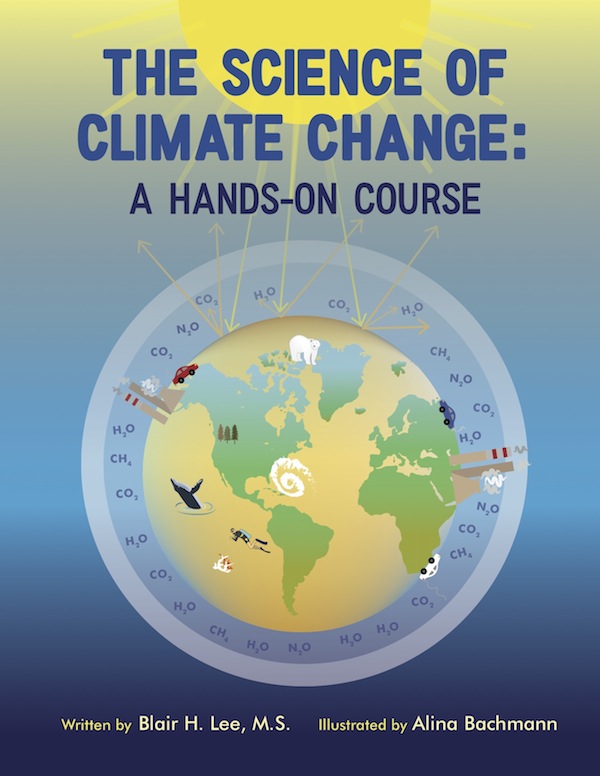
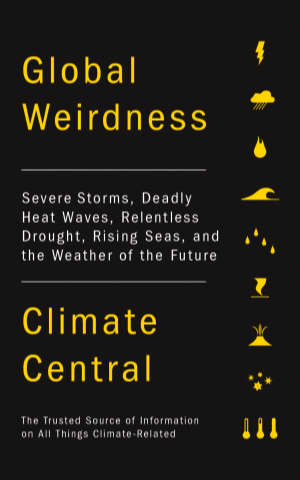
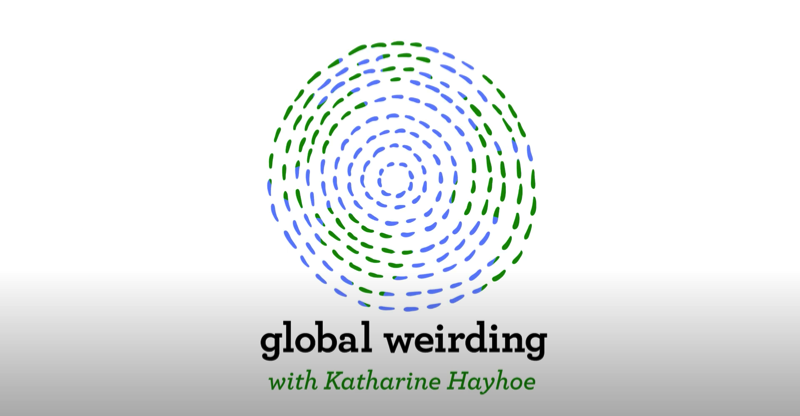
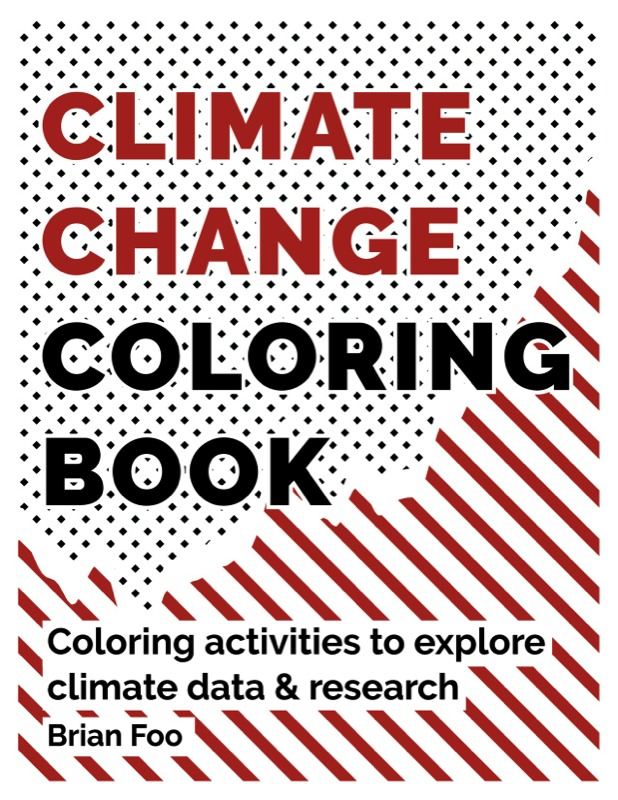
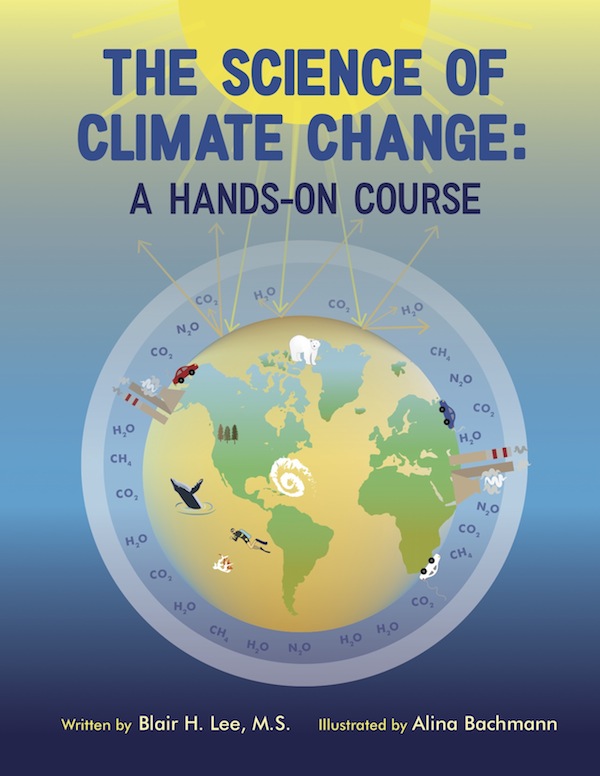

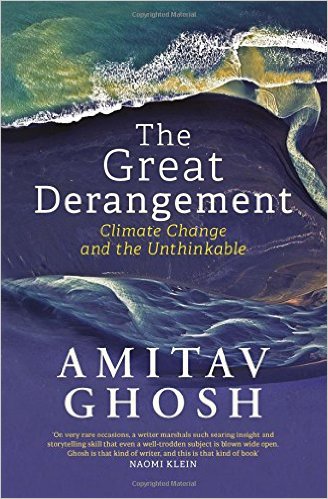
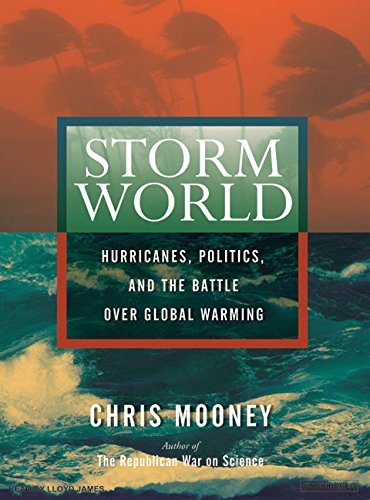
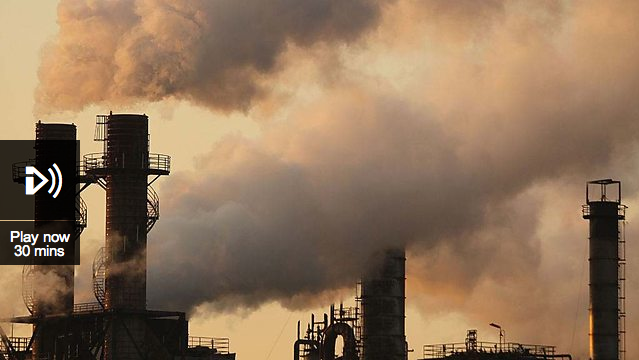
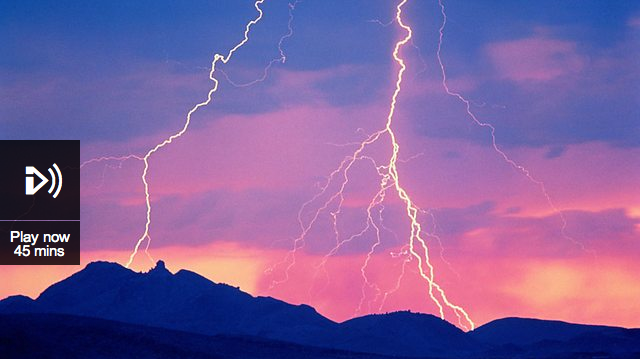



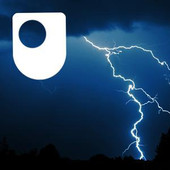
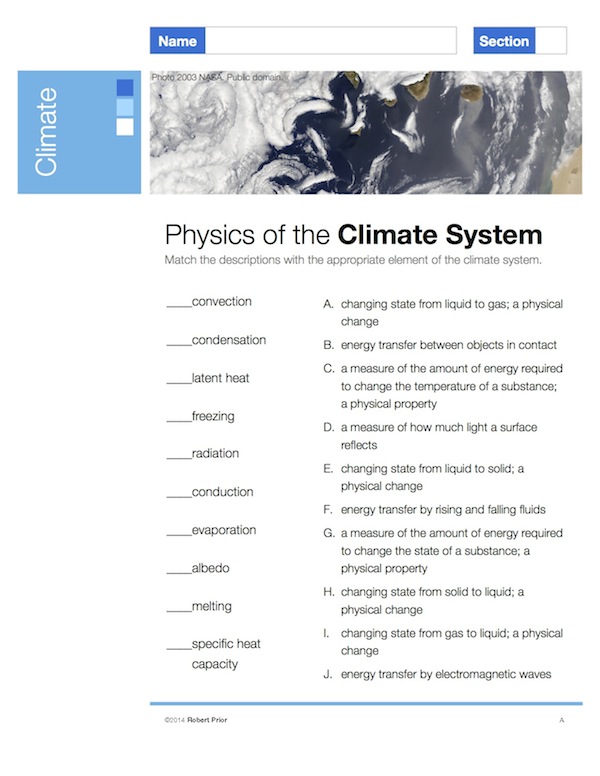
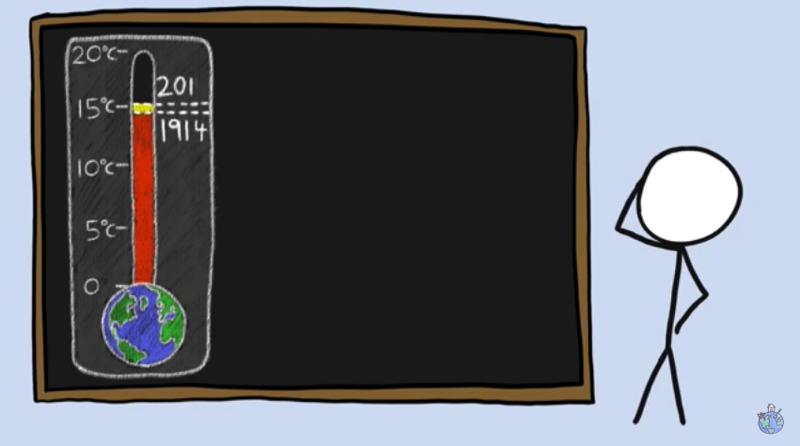
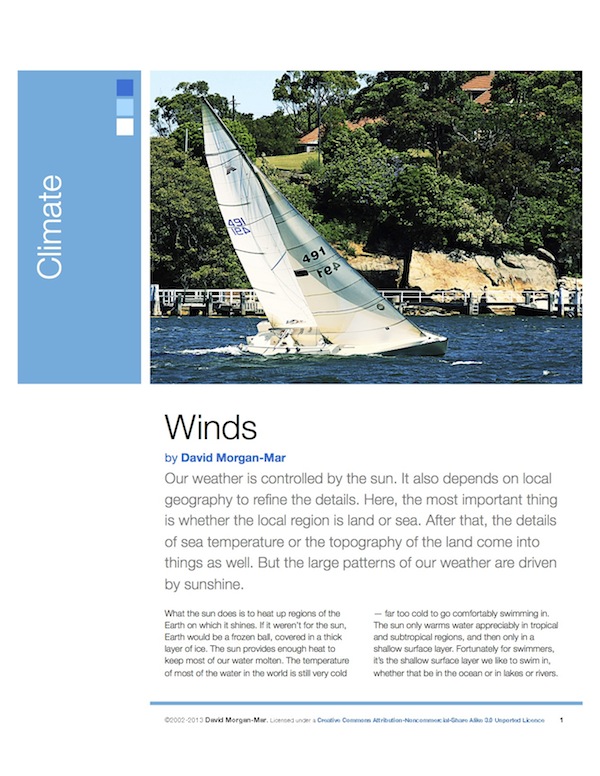
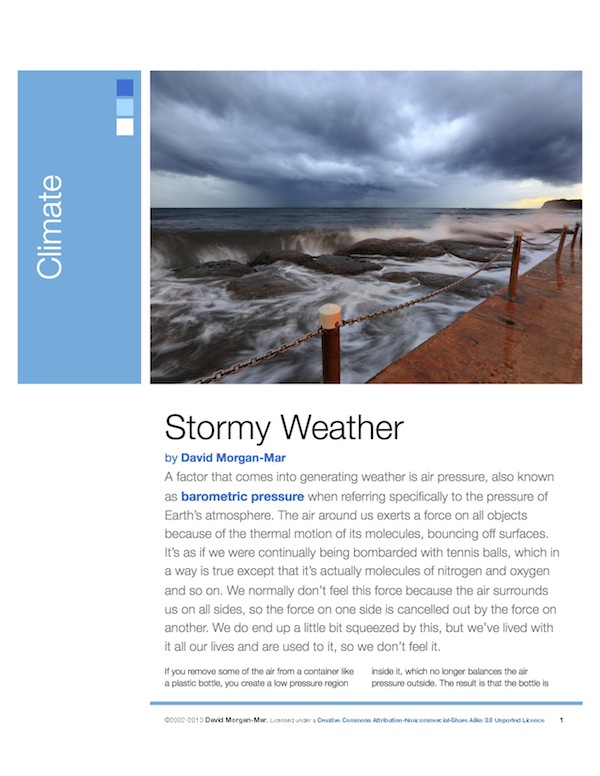
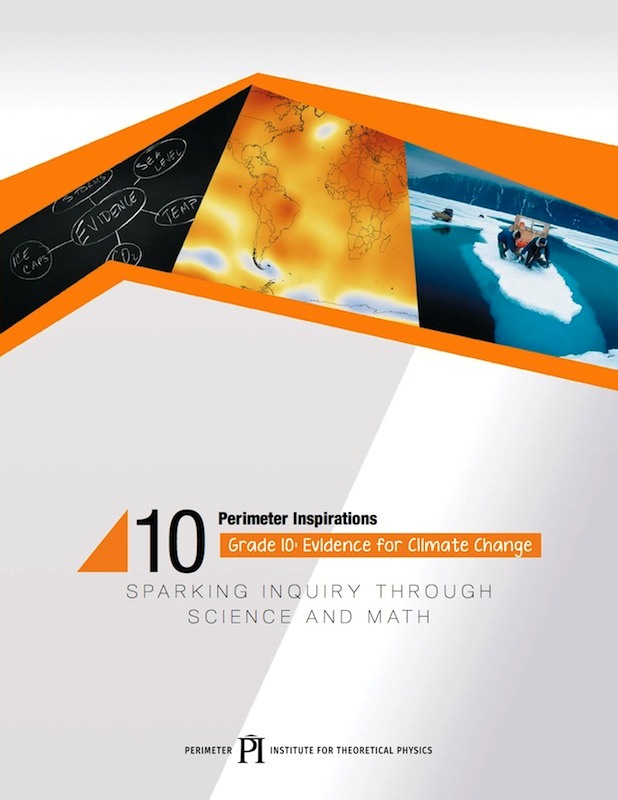
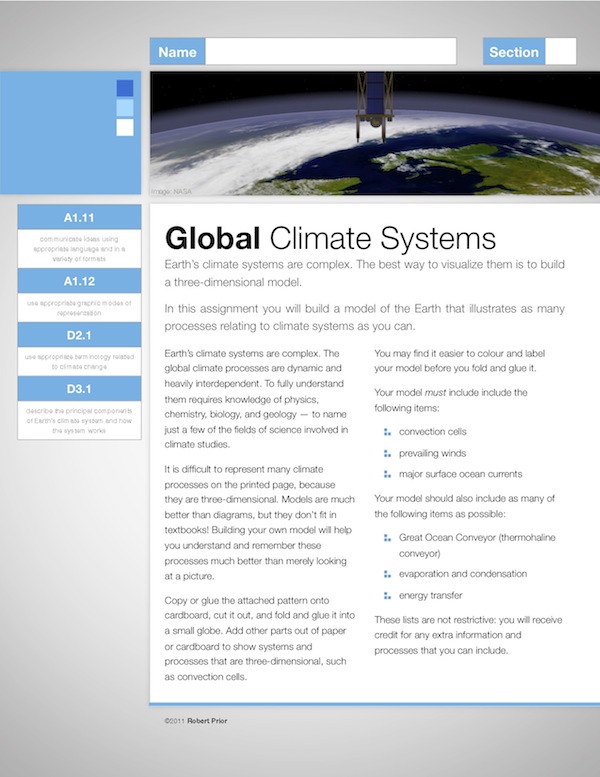

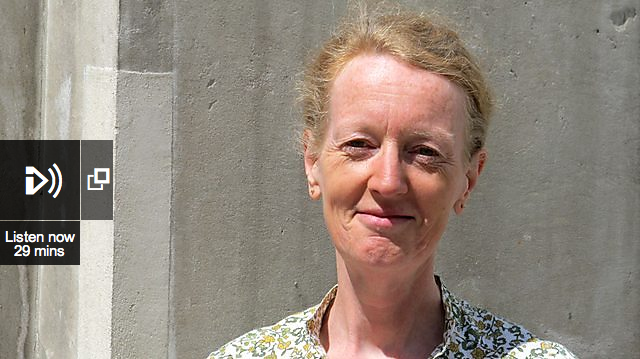
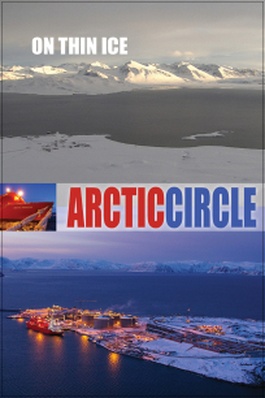
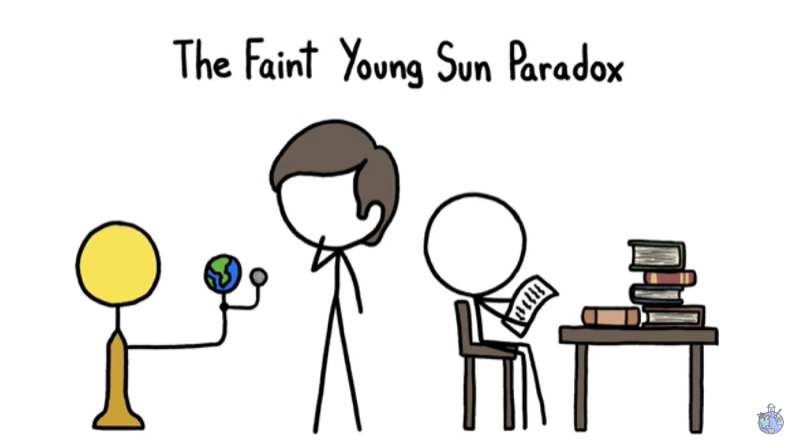
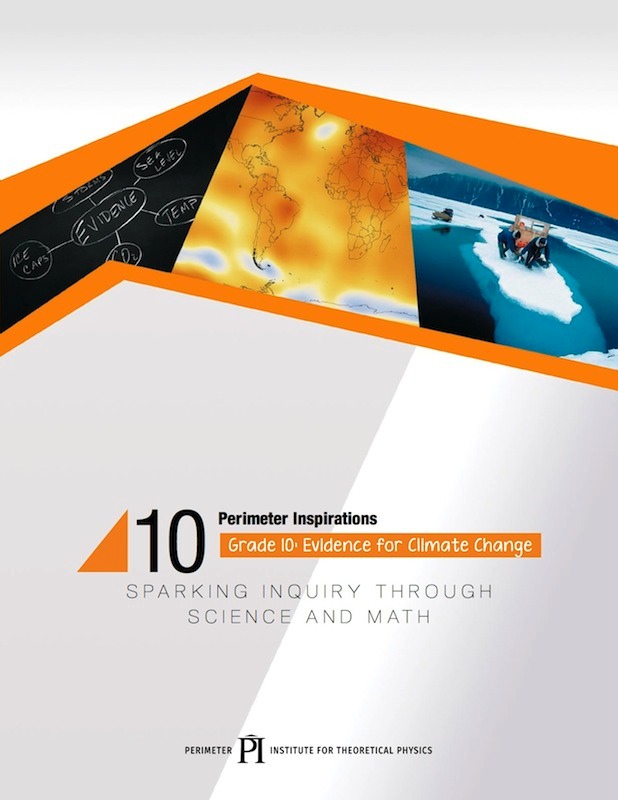
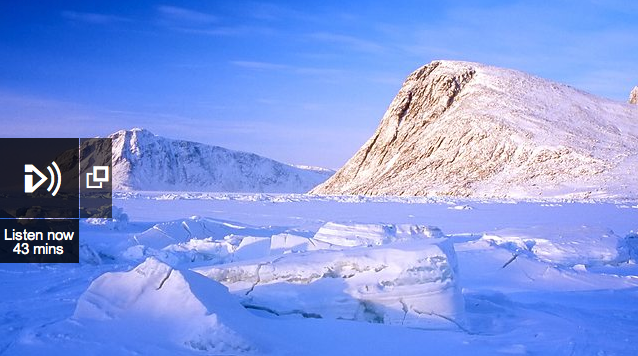
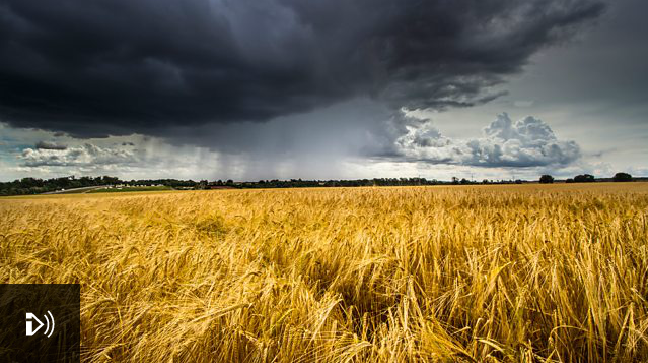
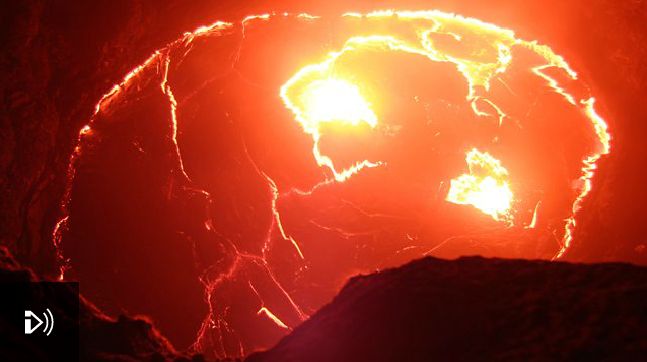
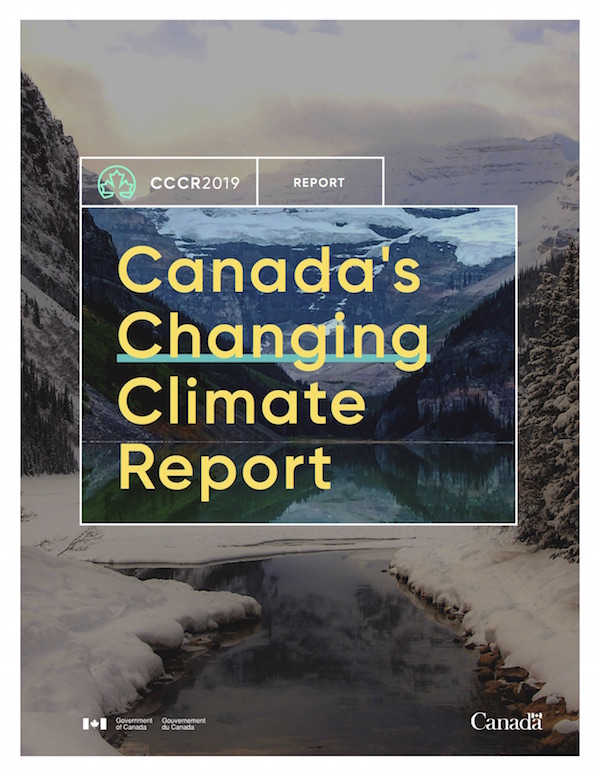
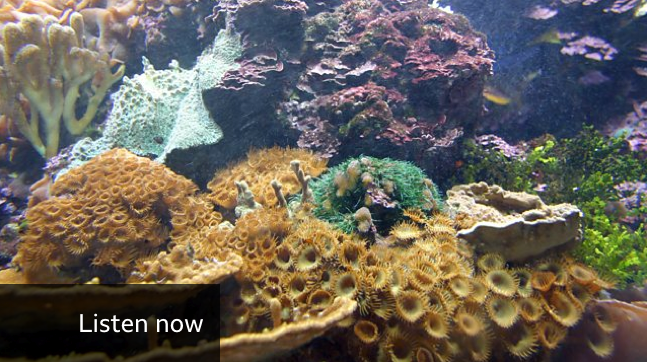
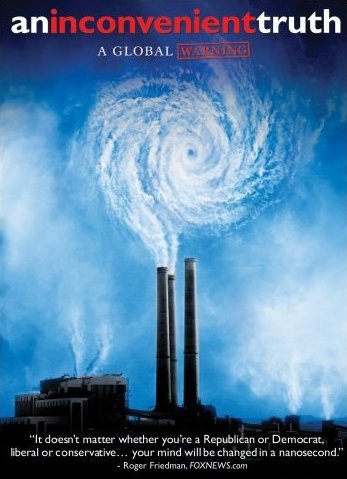
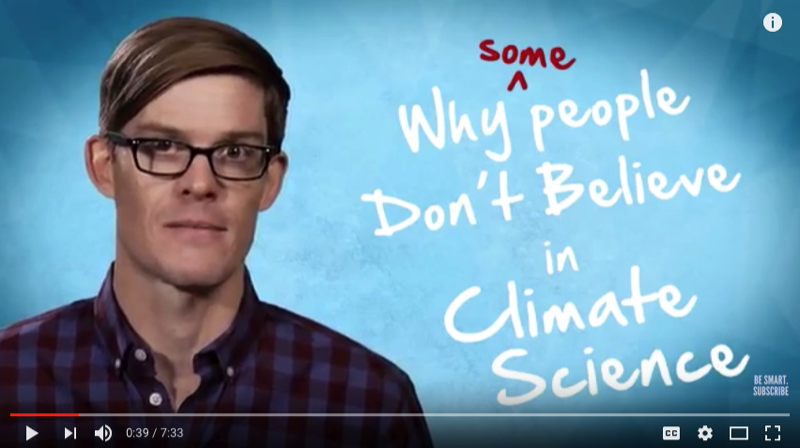
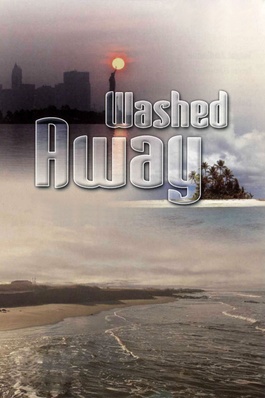

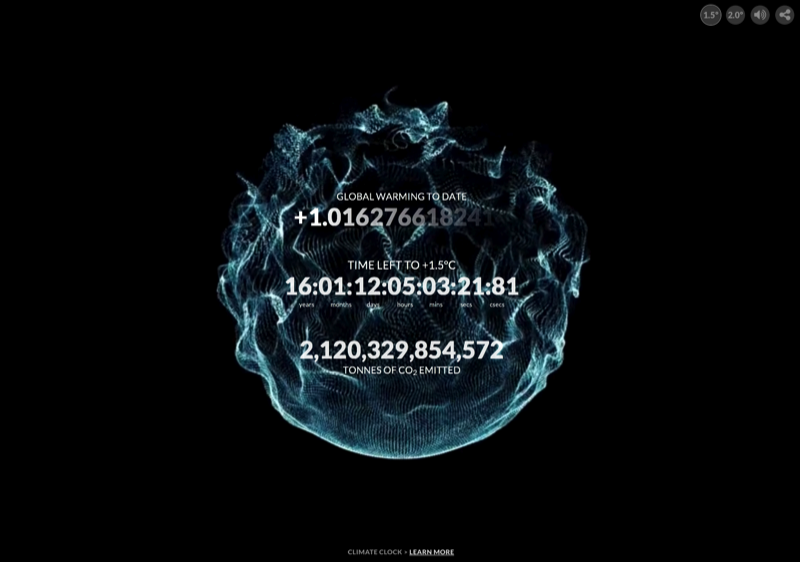
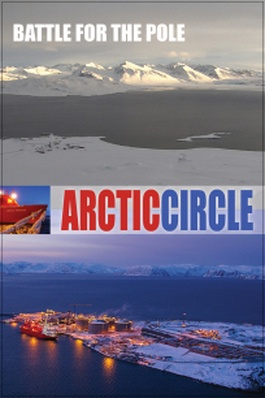

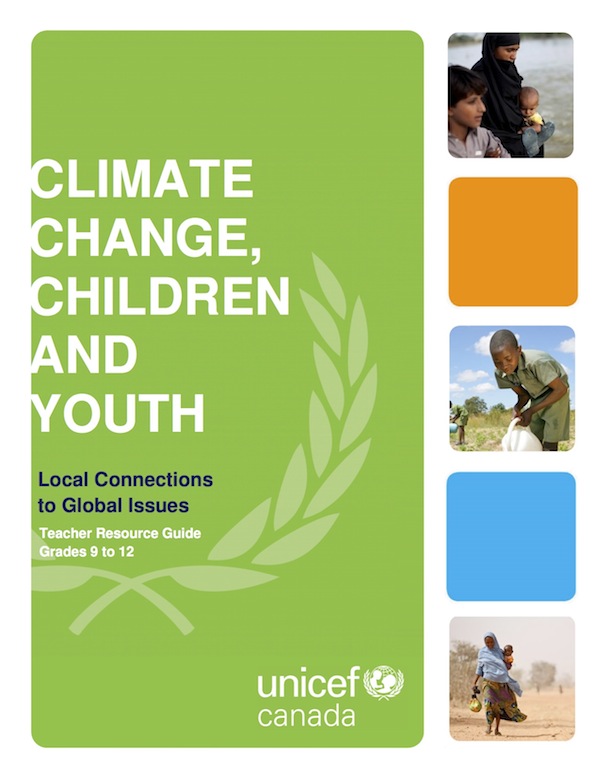
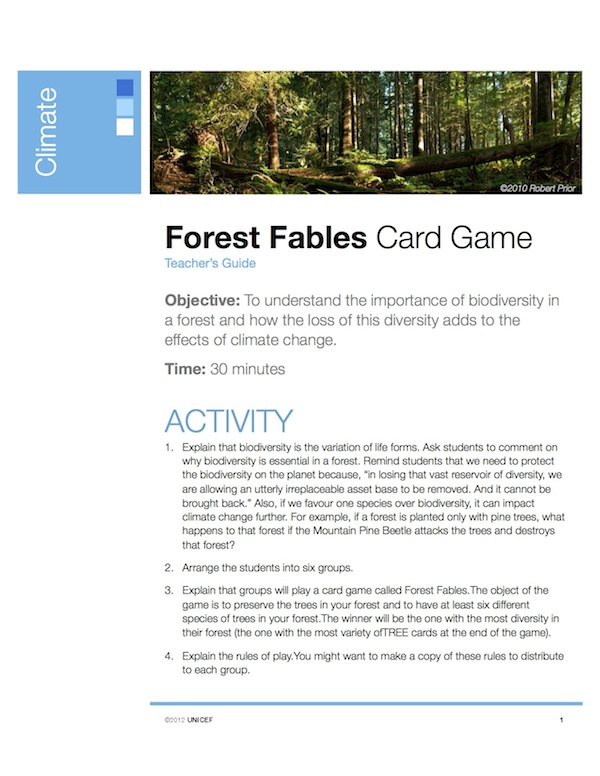
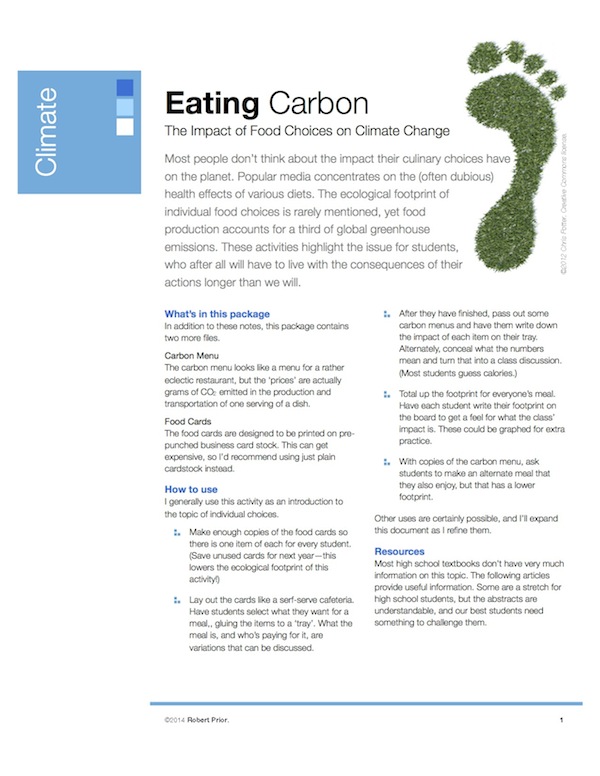
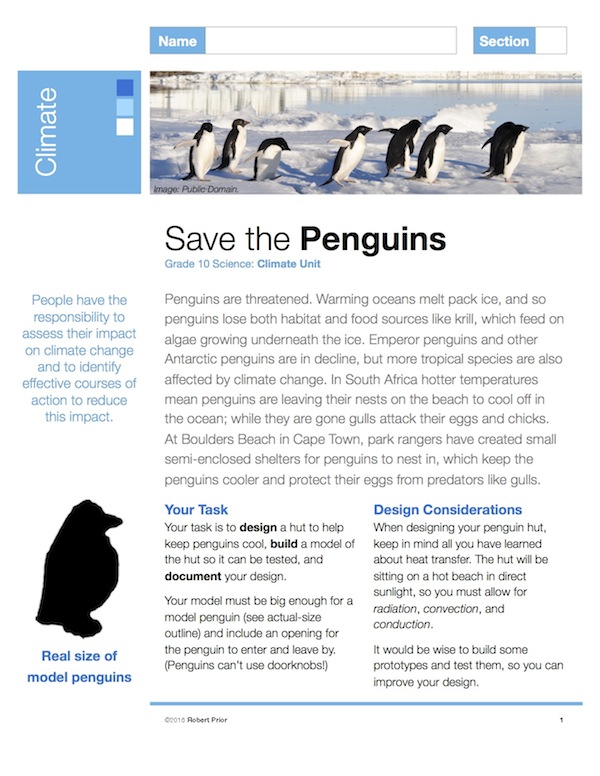
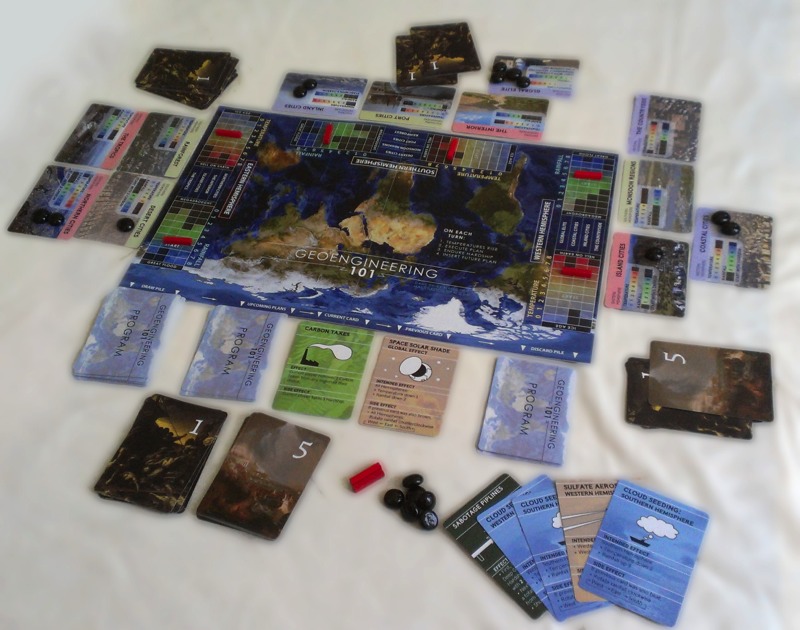
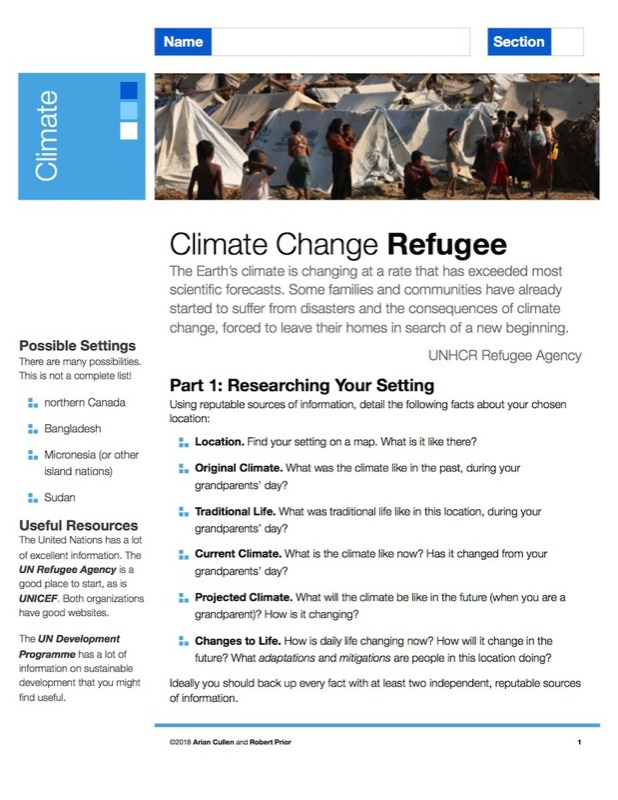
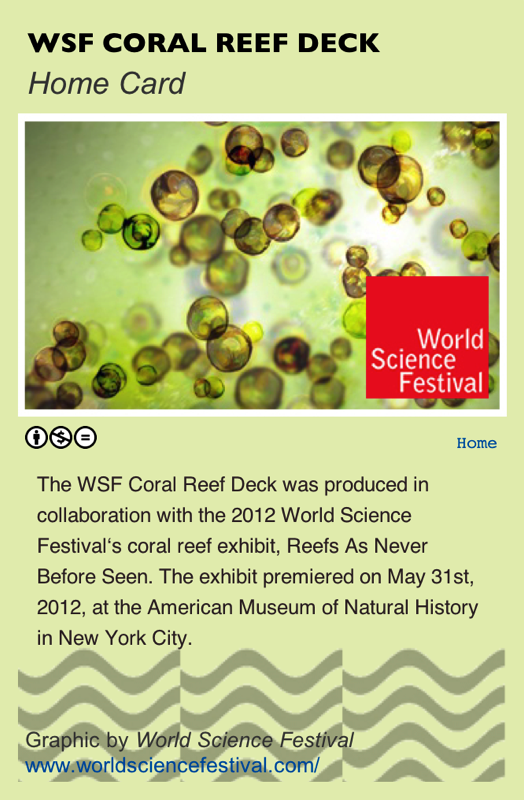
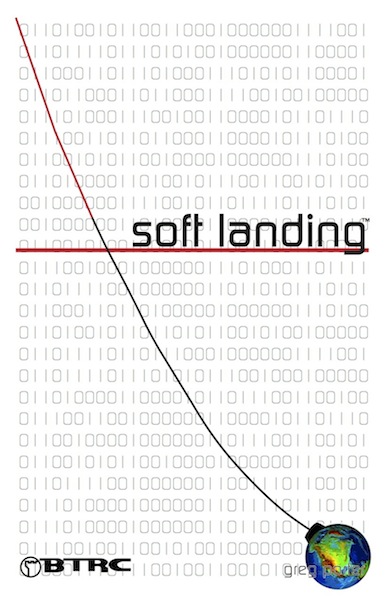
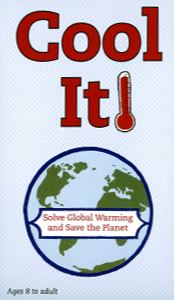
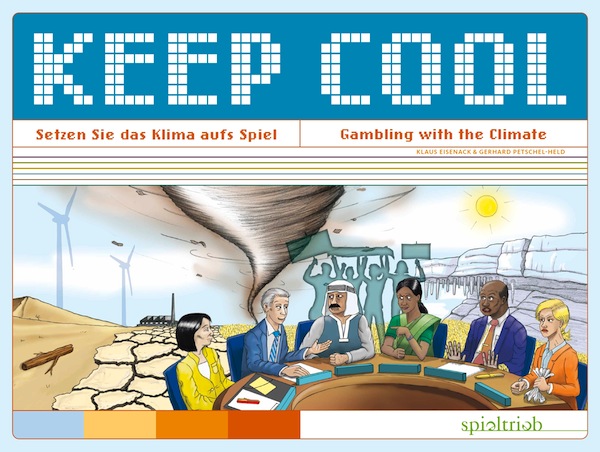
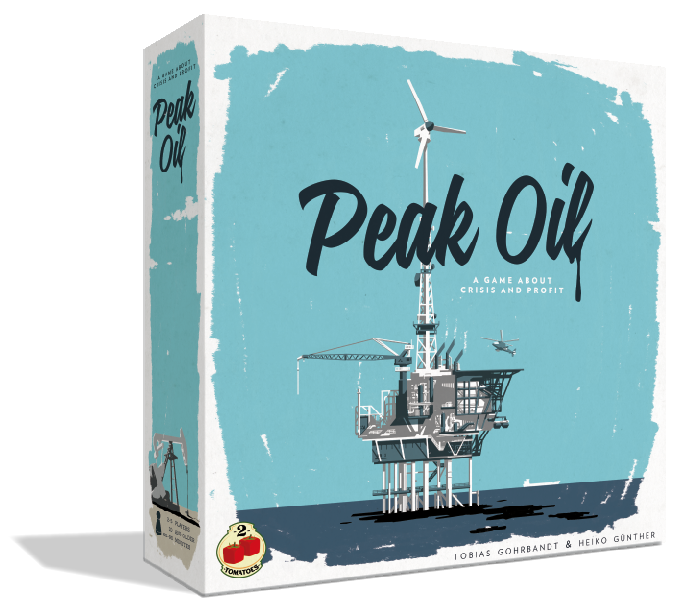
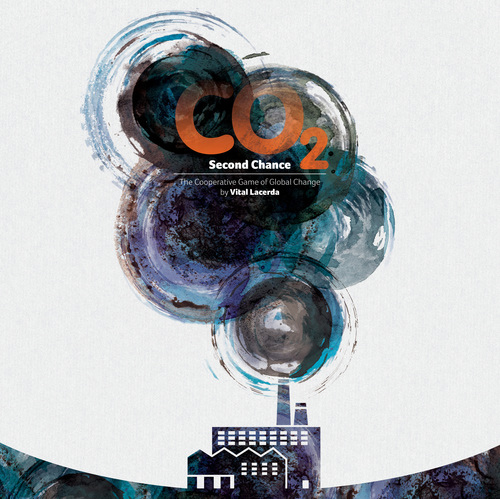
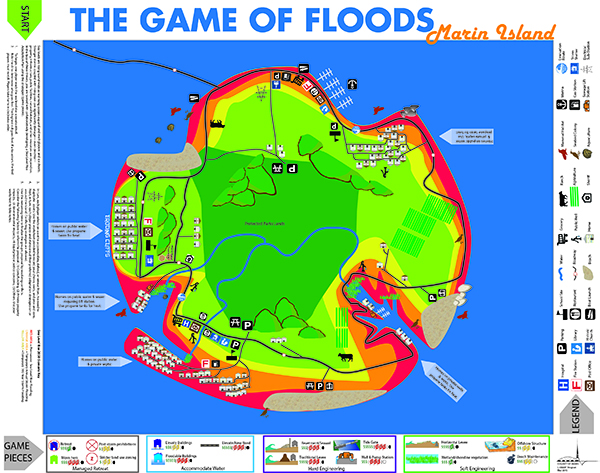
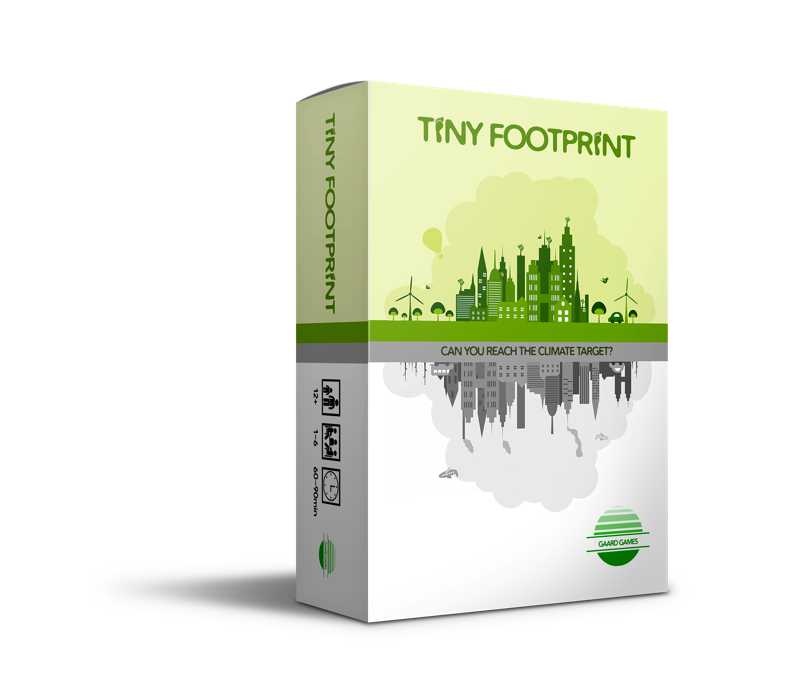
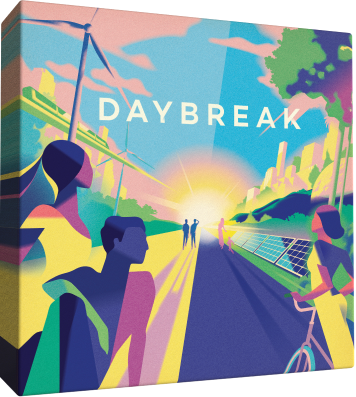

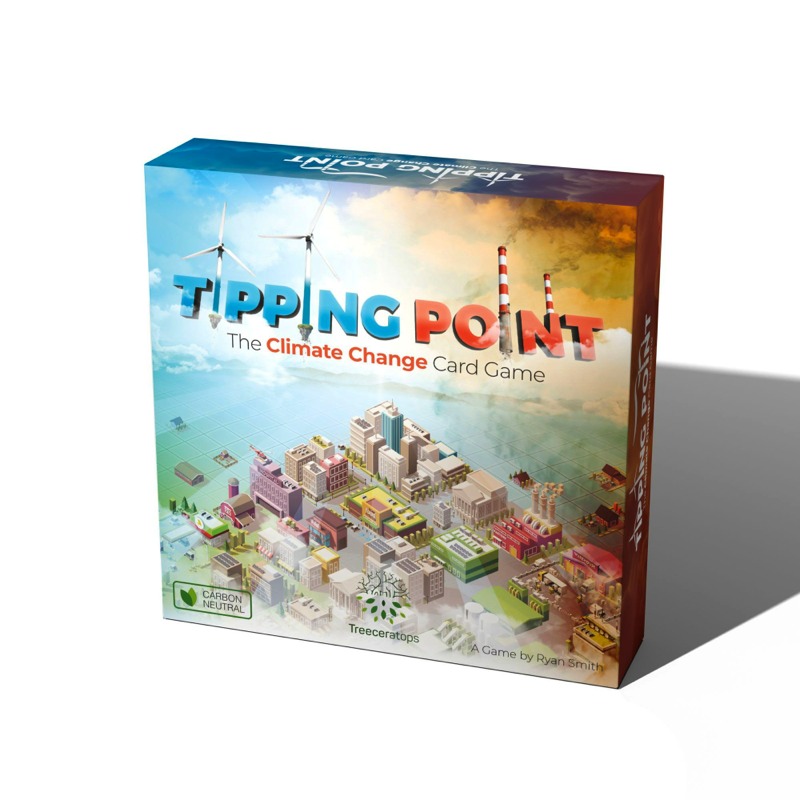
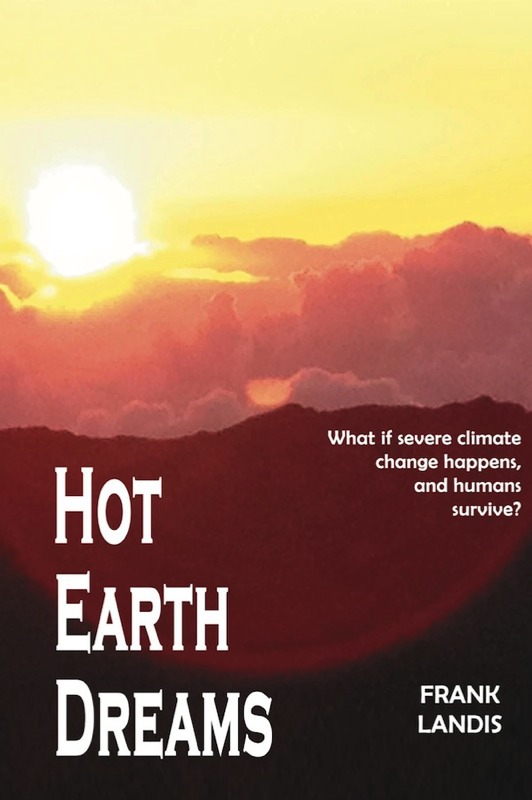
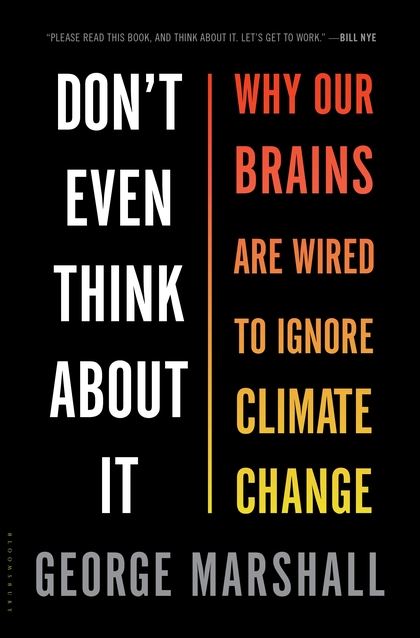
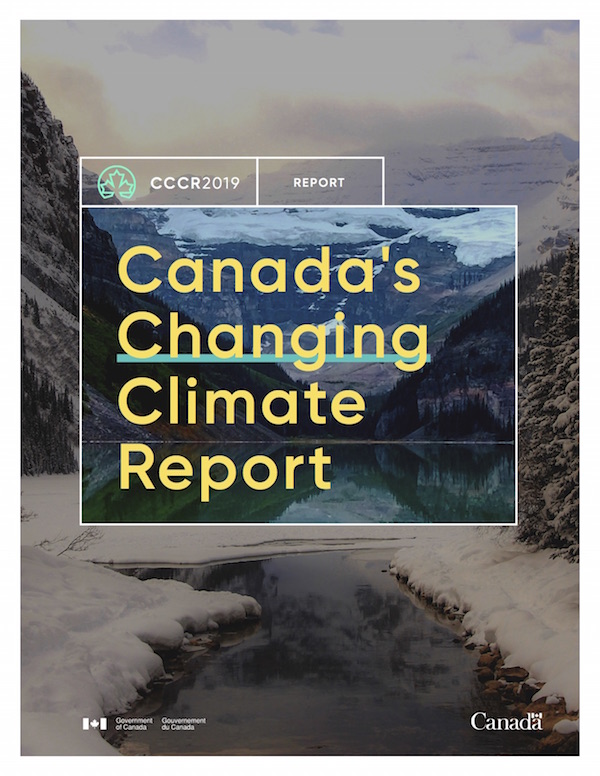
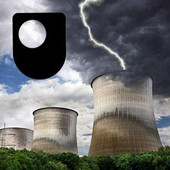

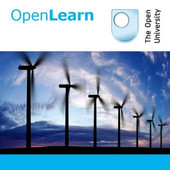
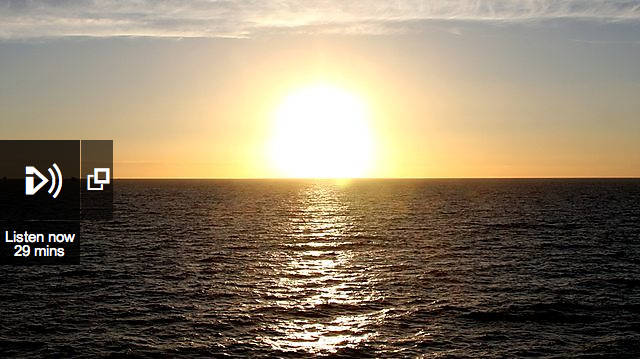
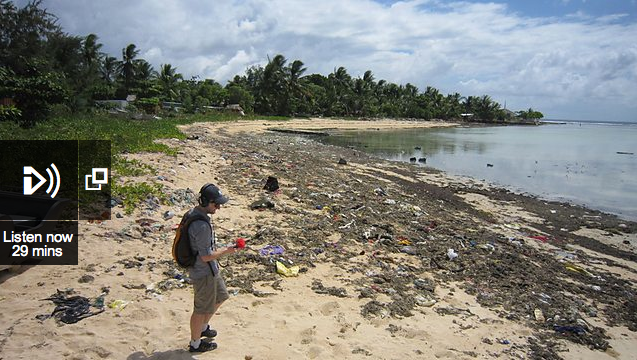
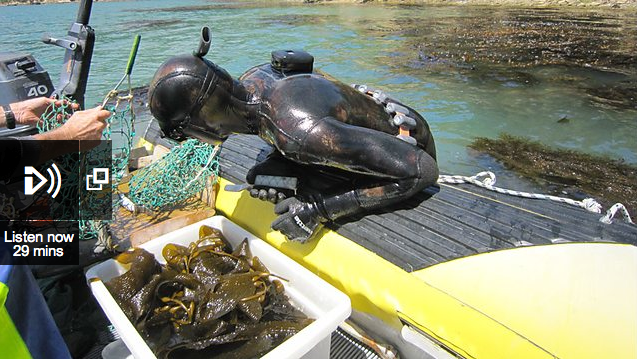
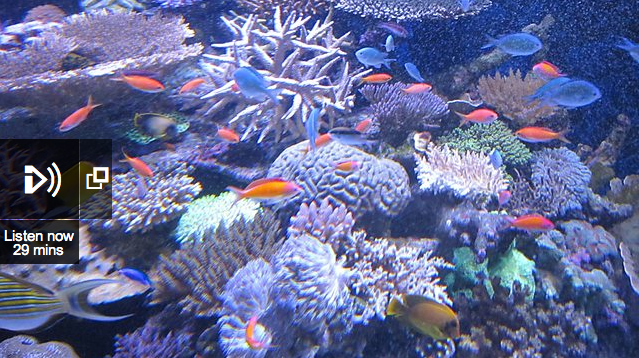
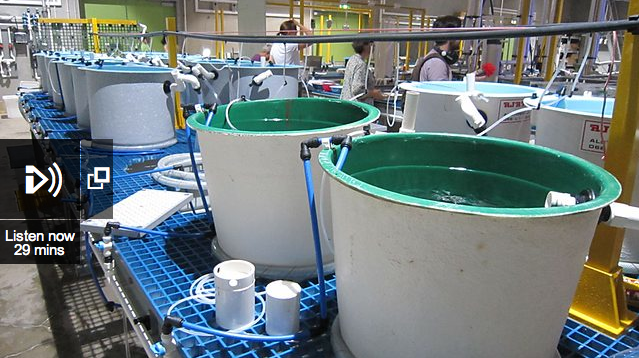
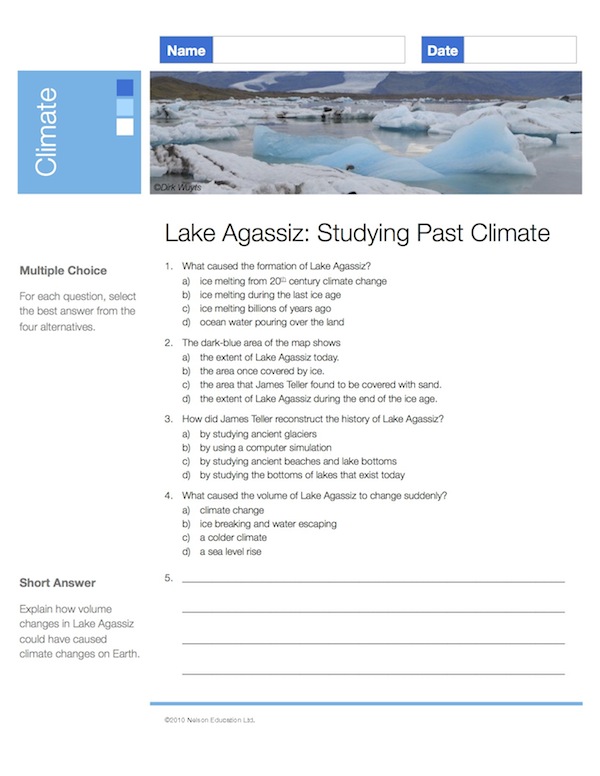
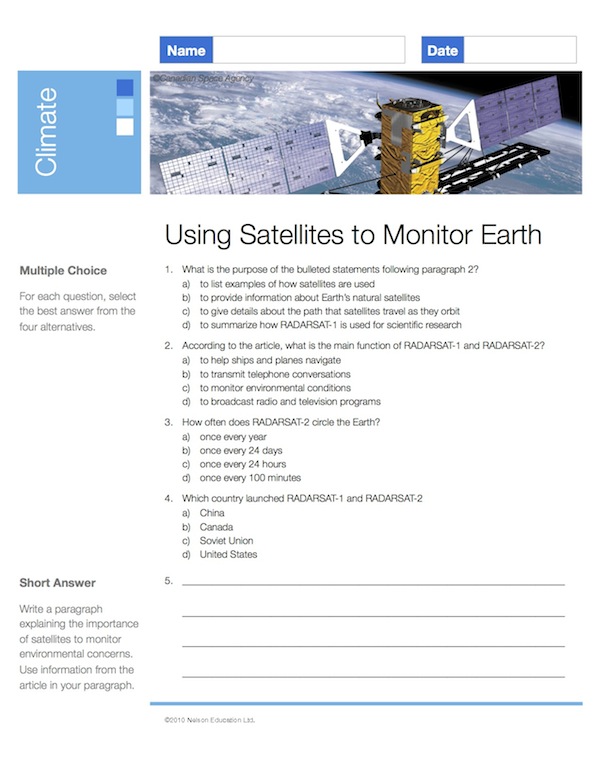
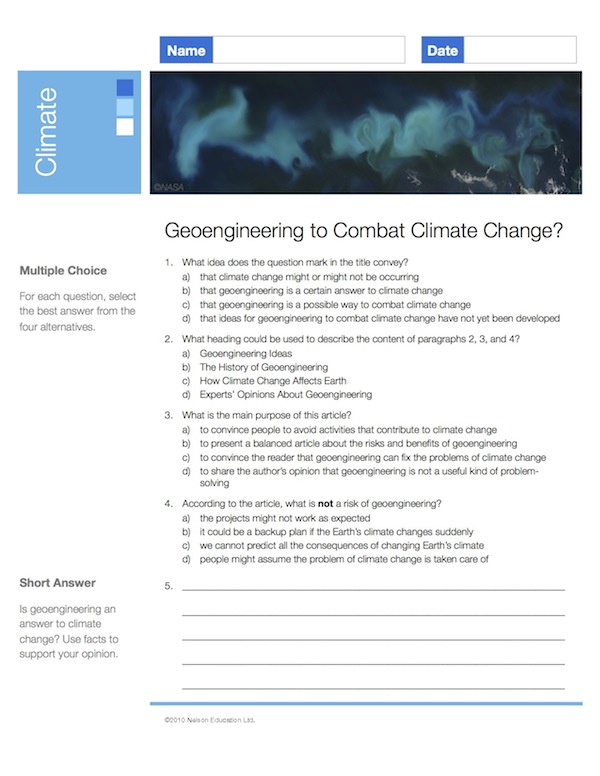
Teaching Science